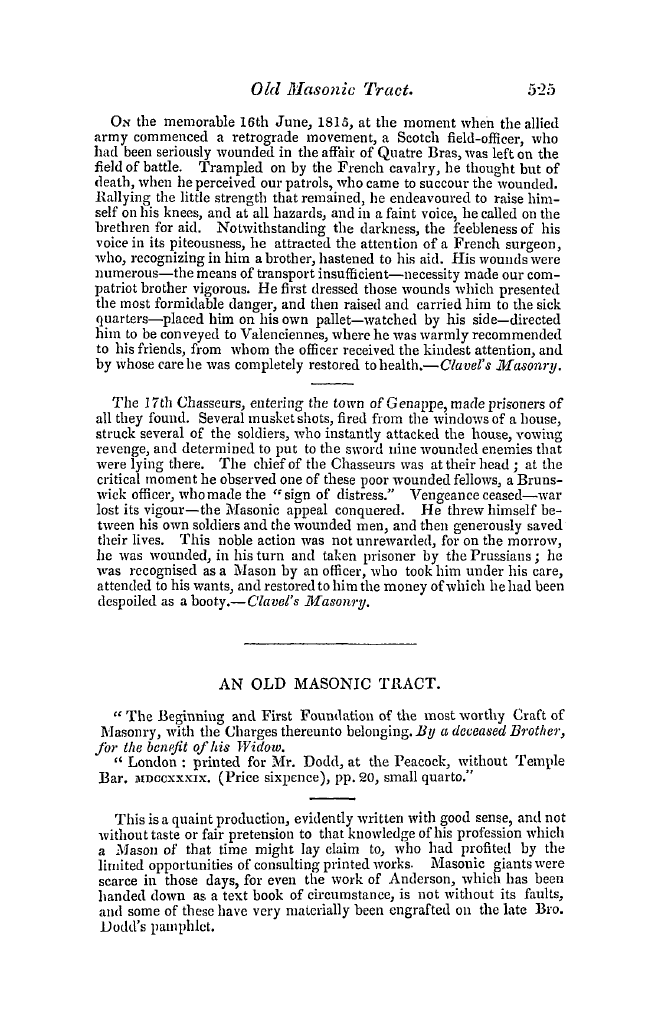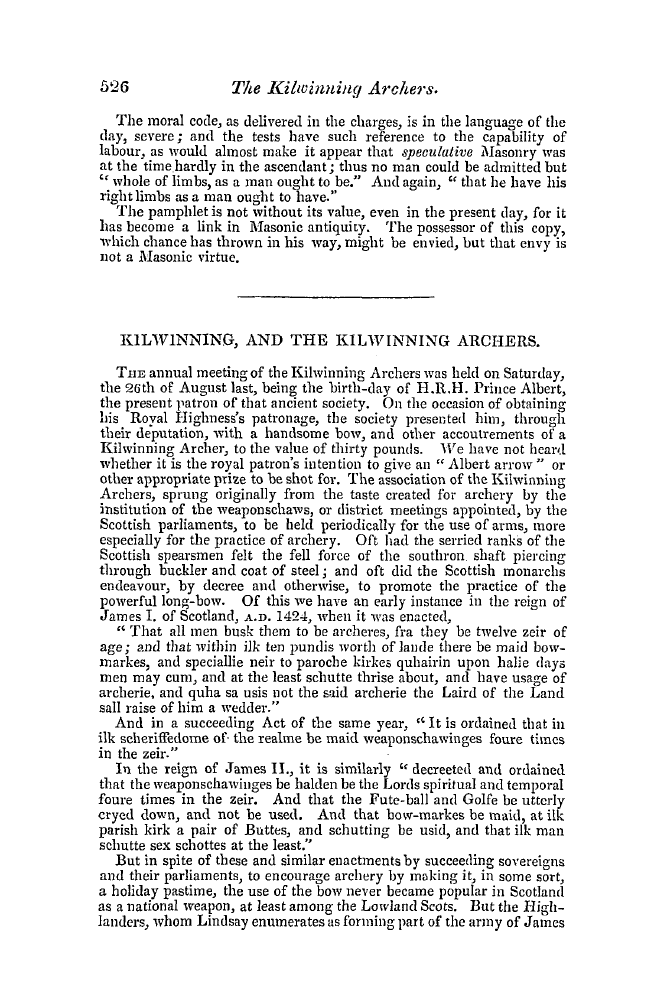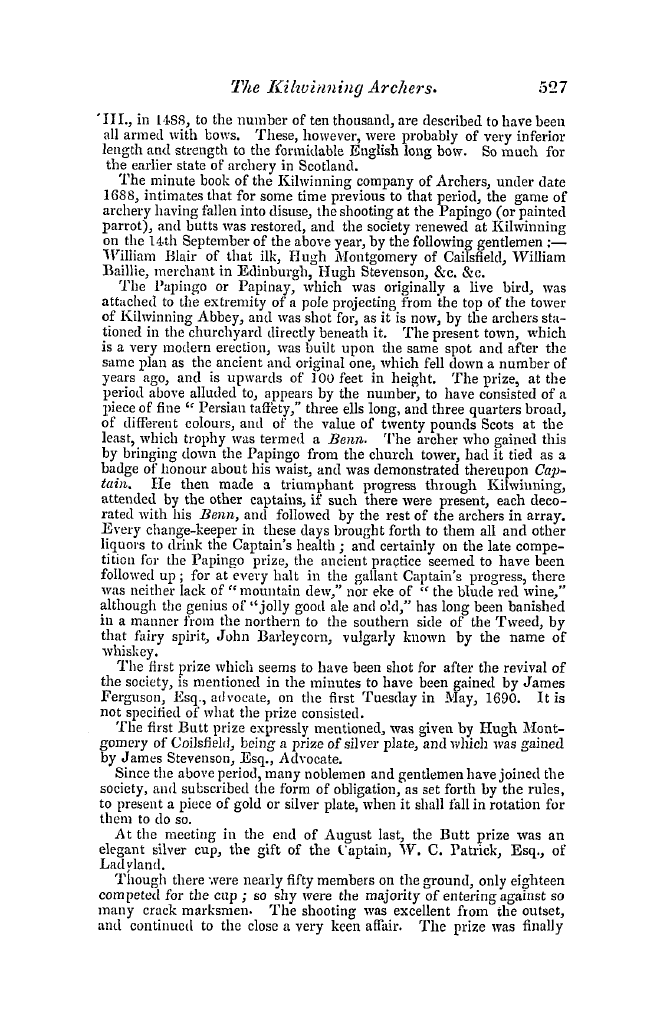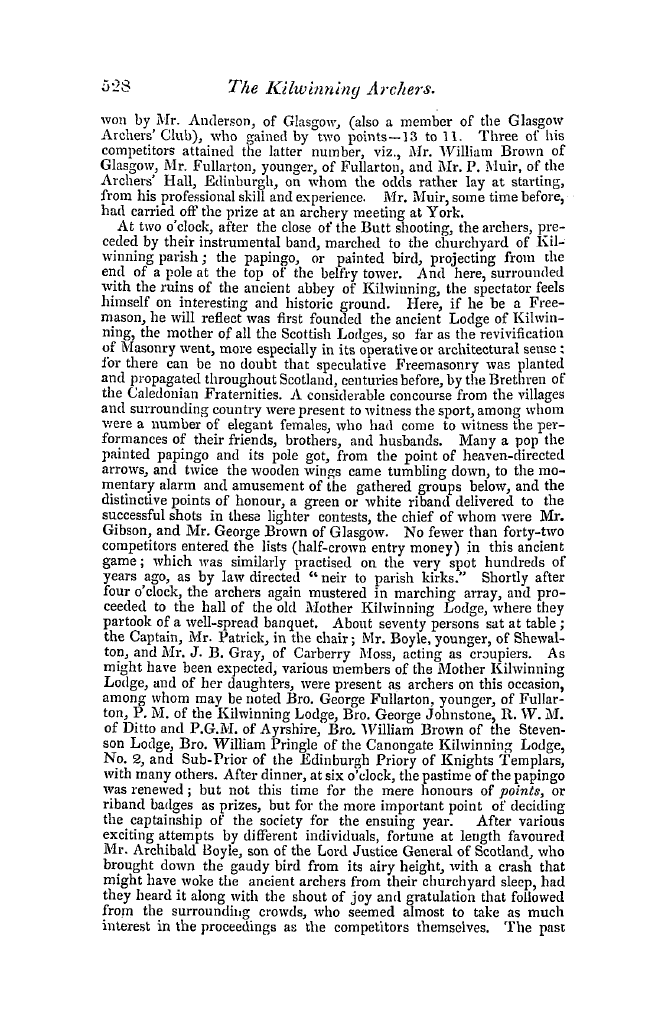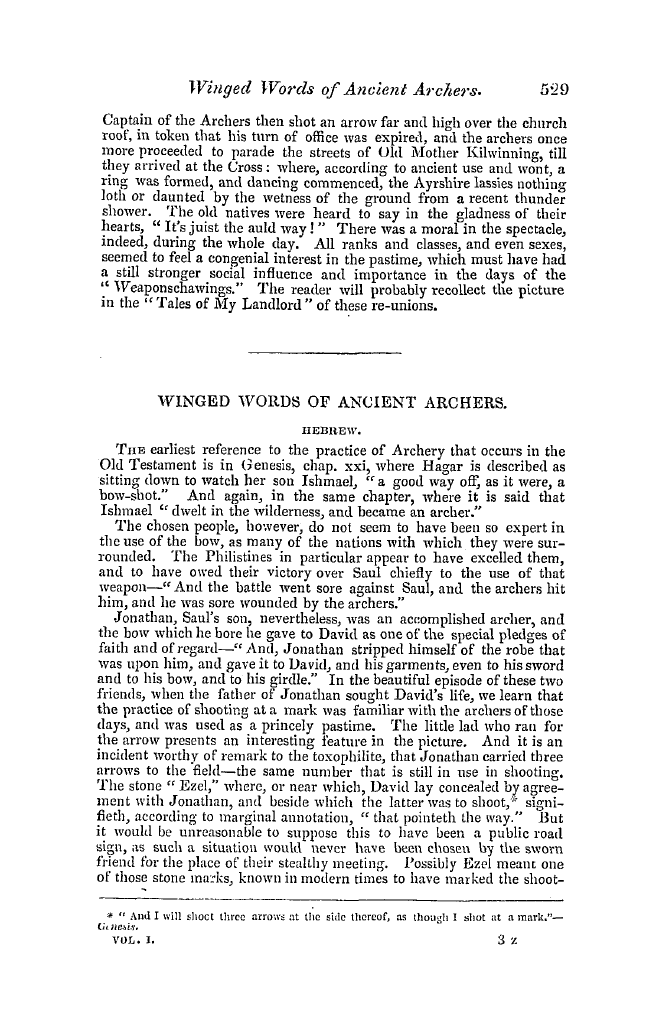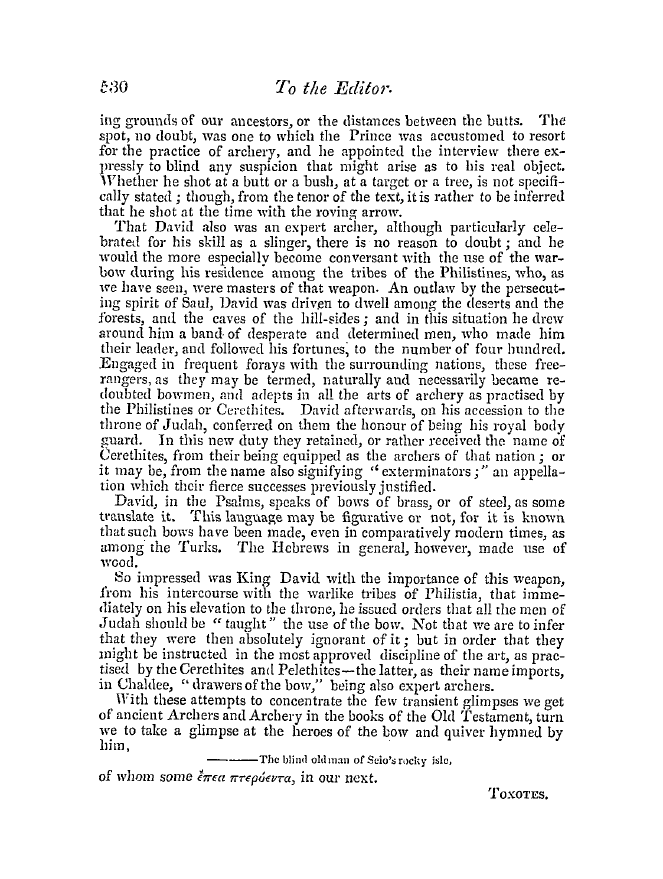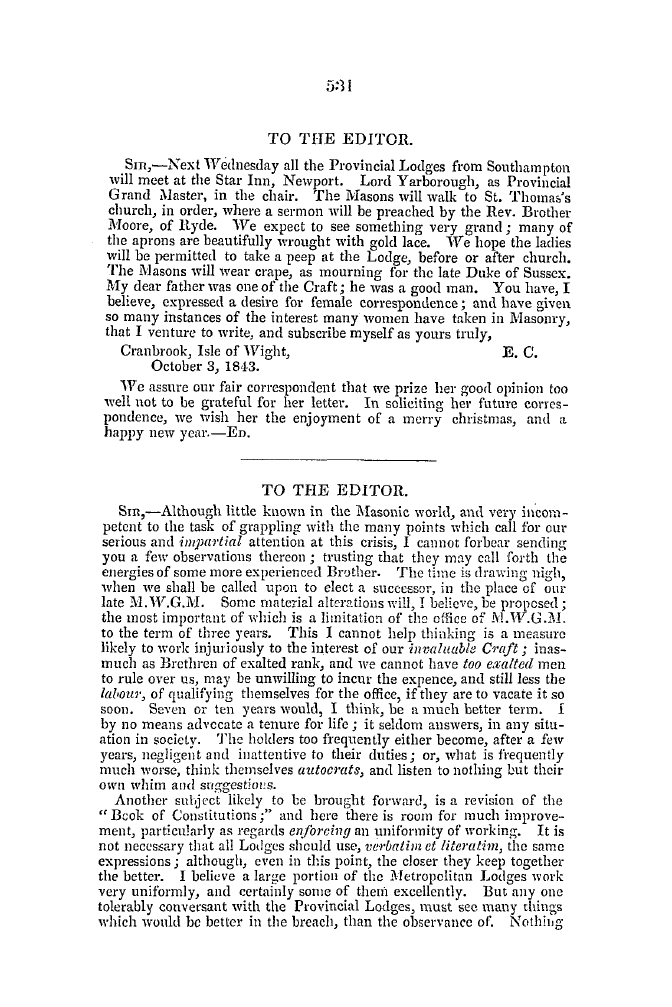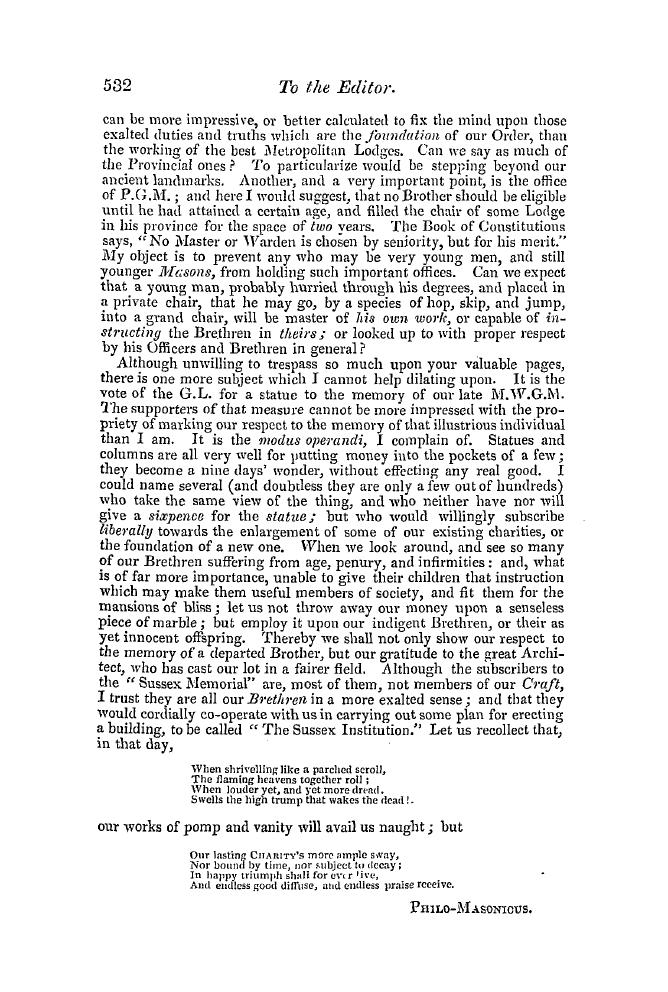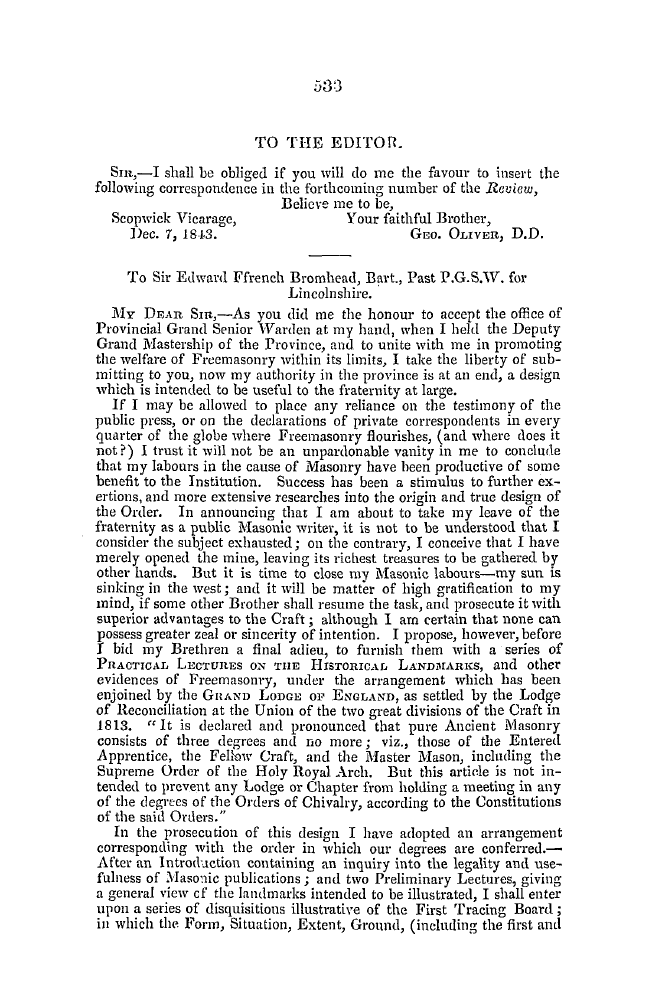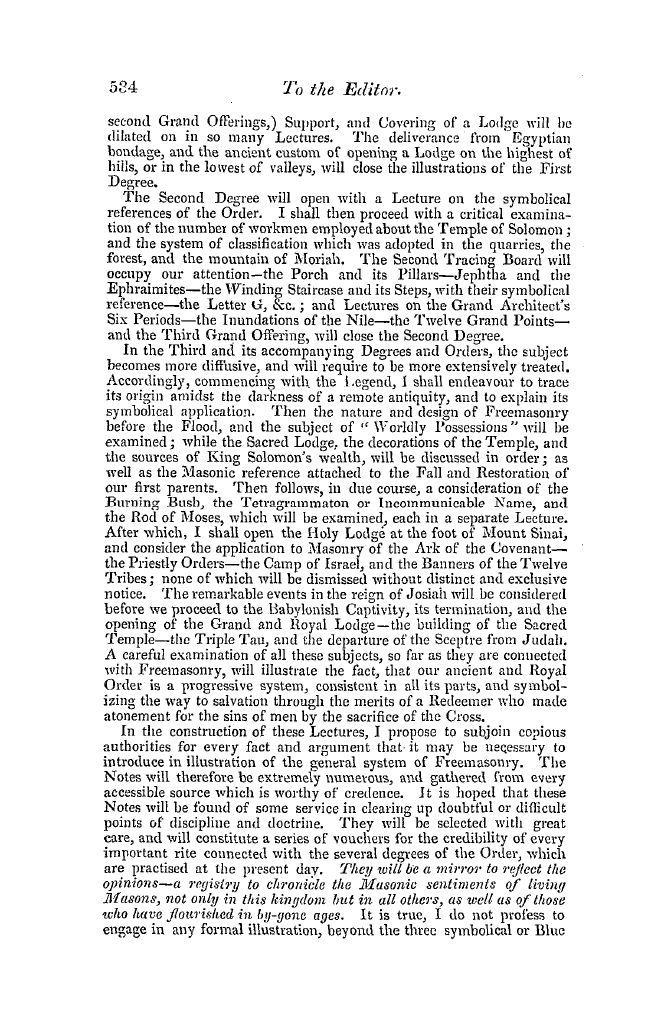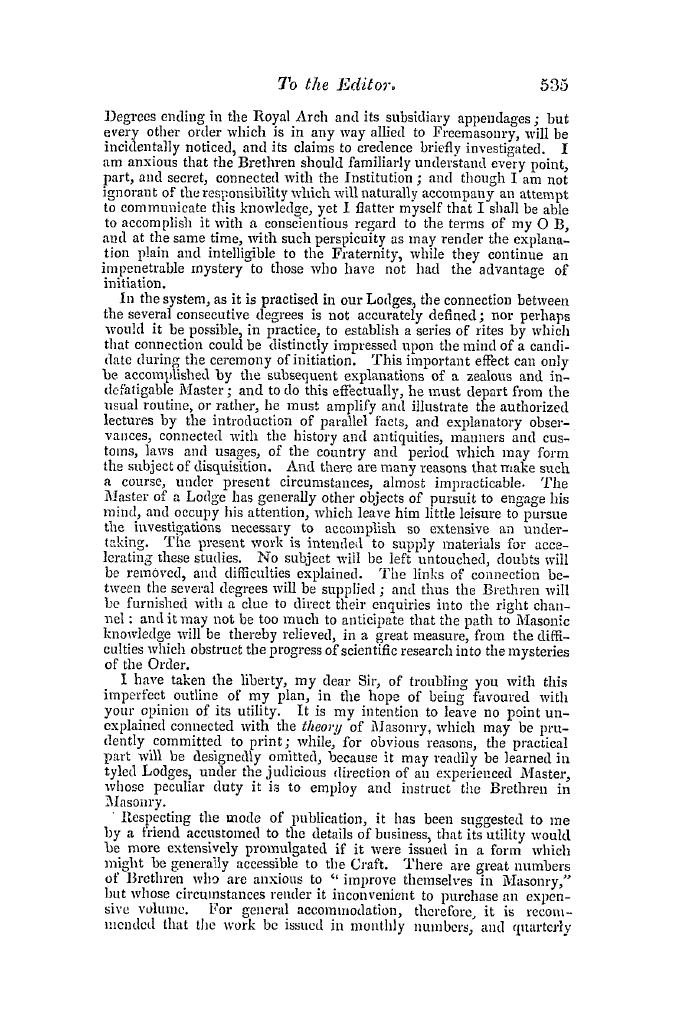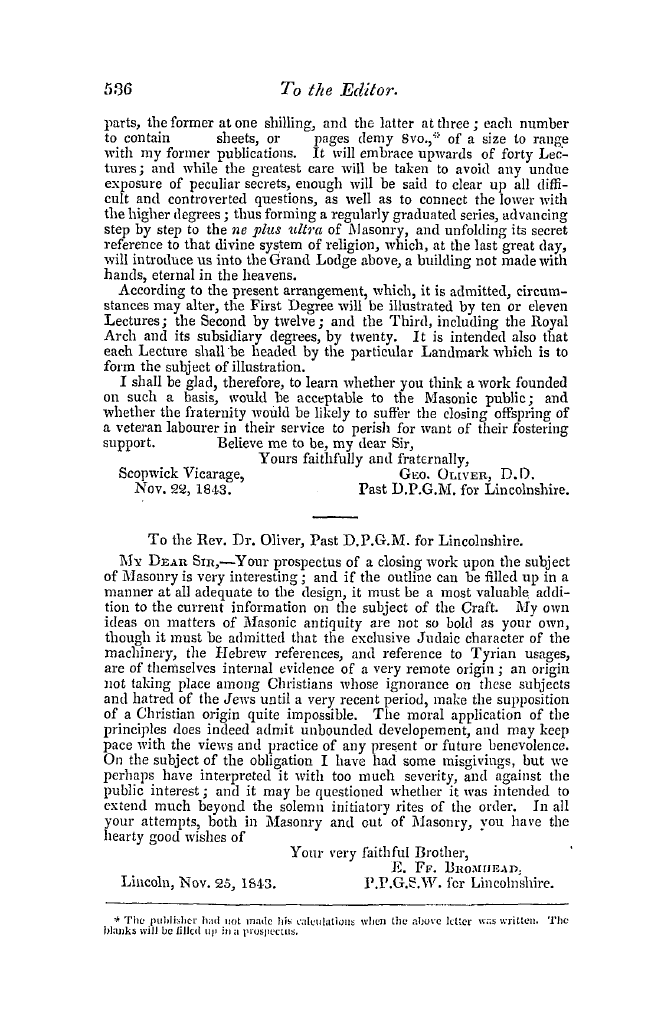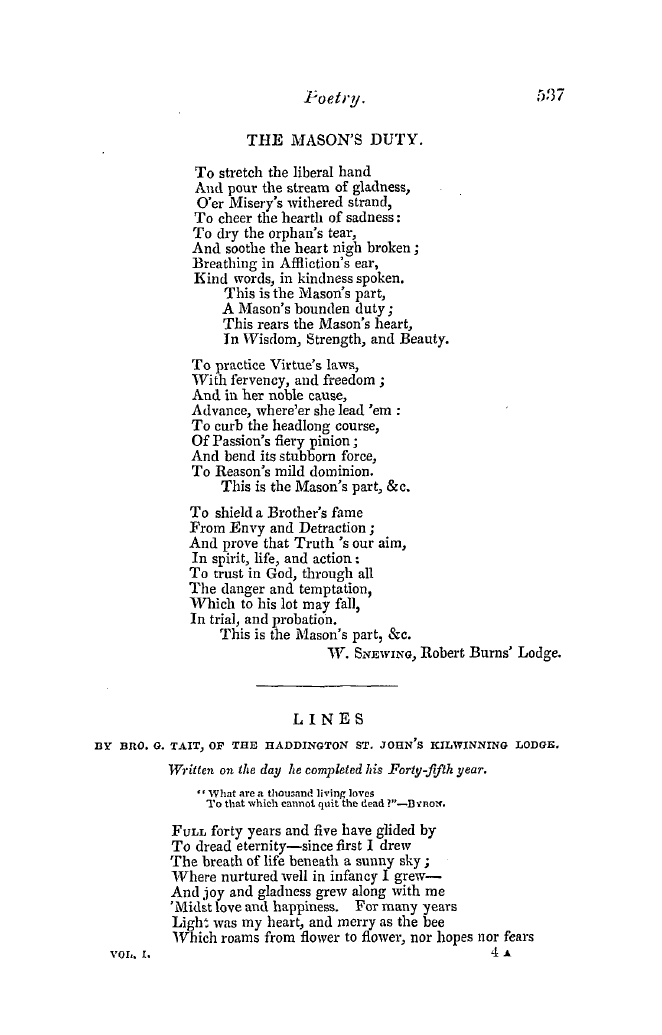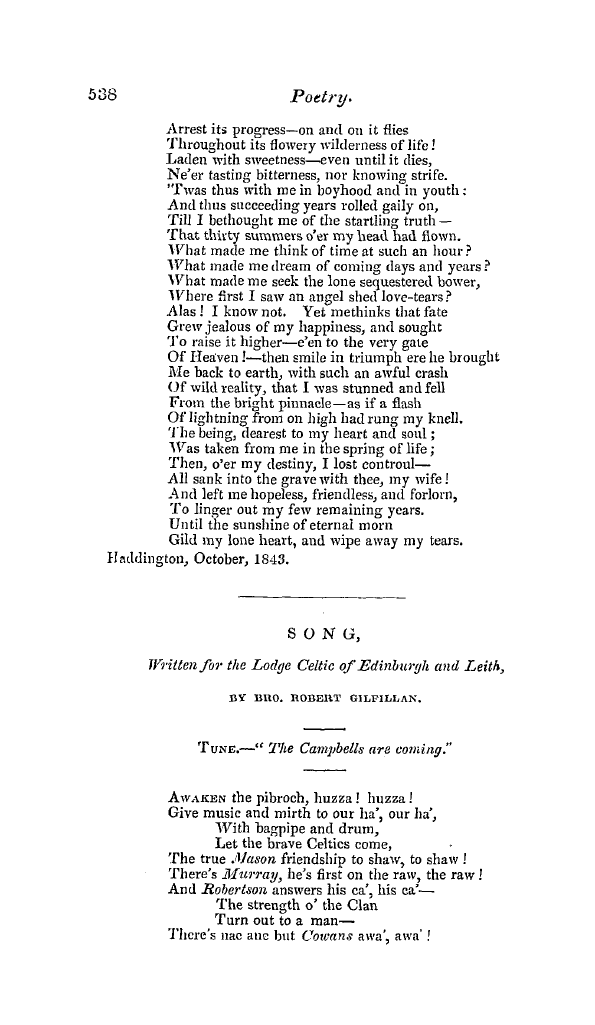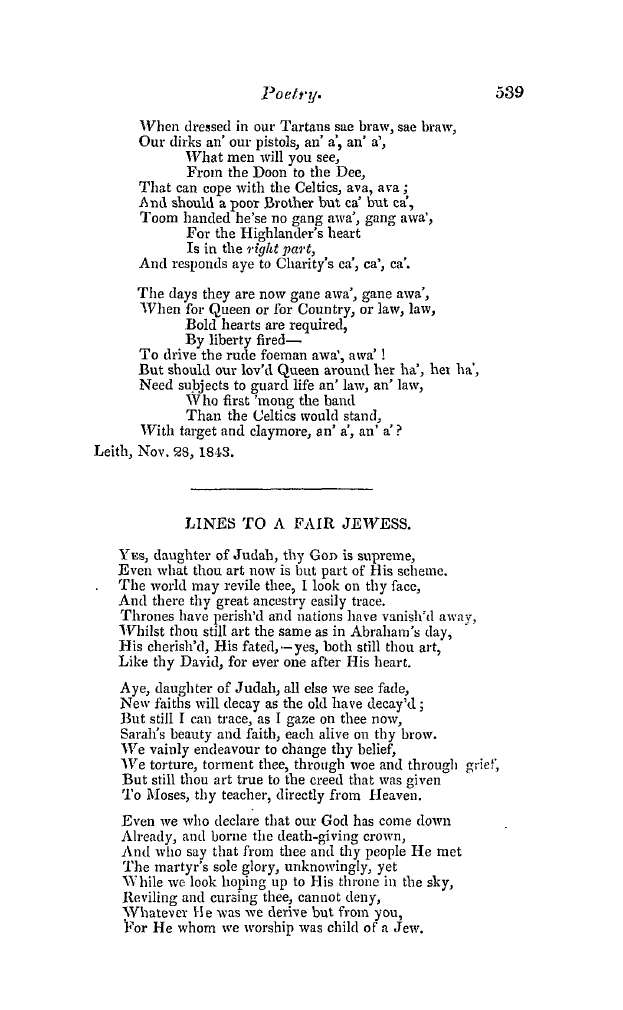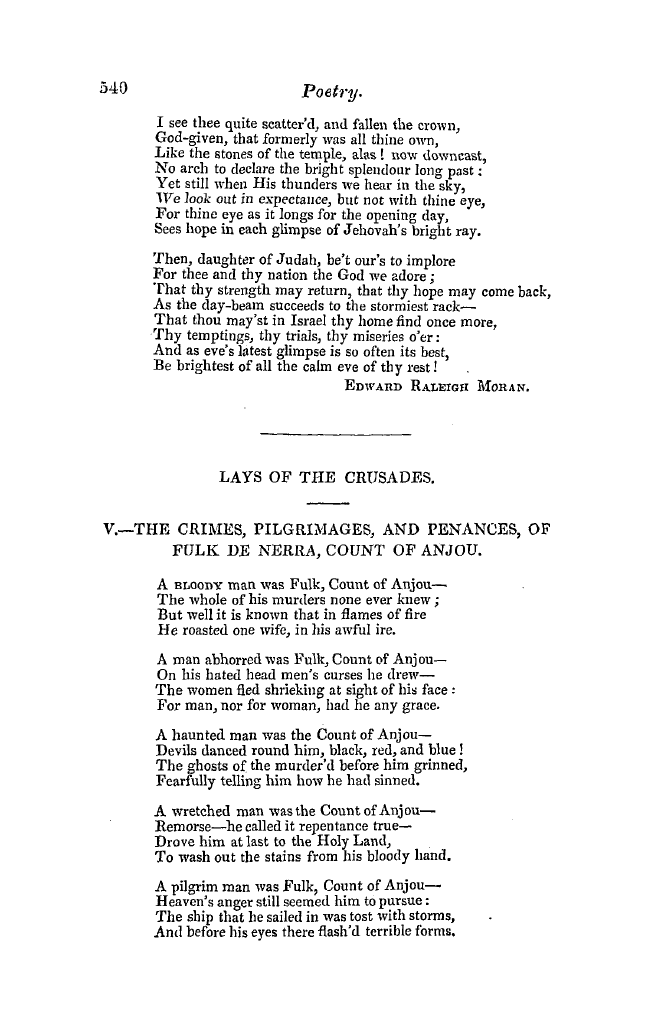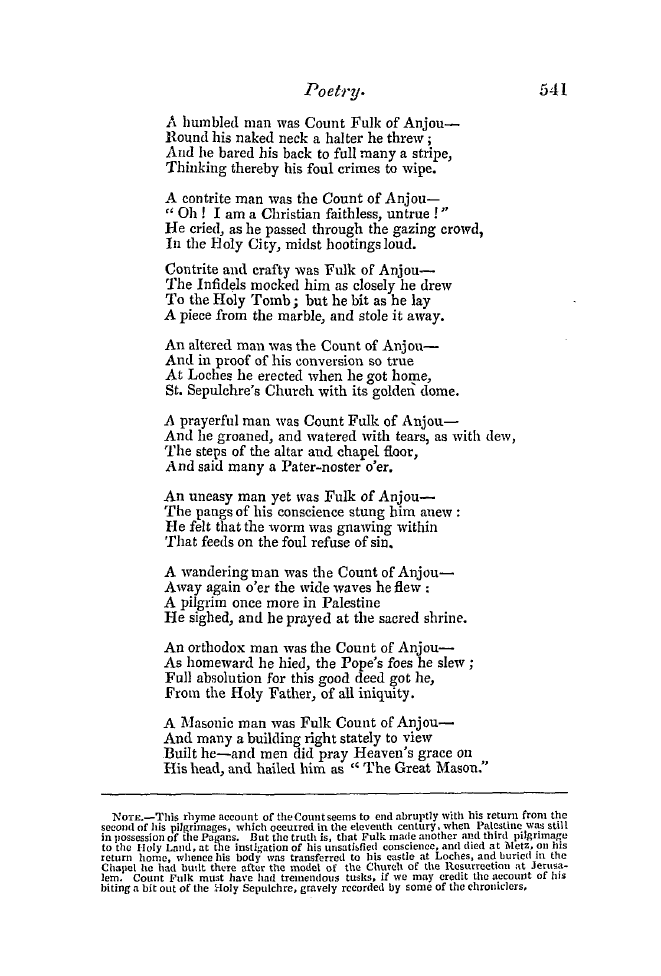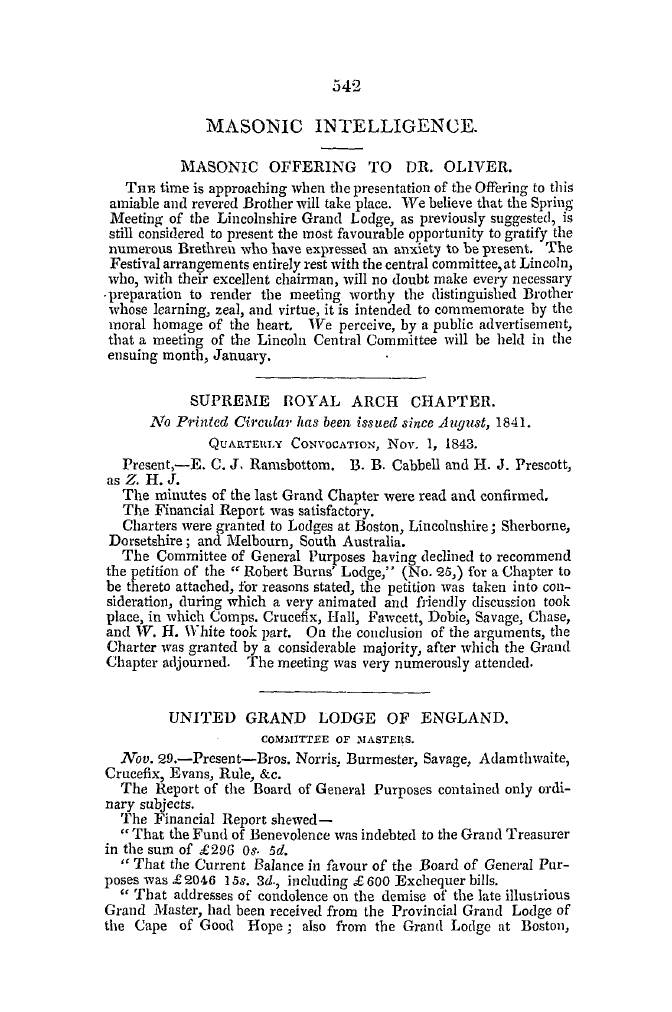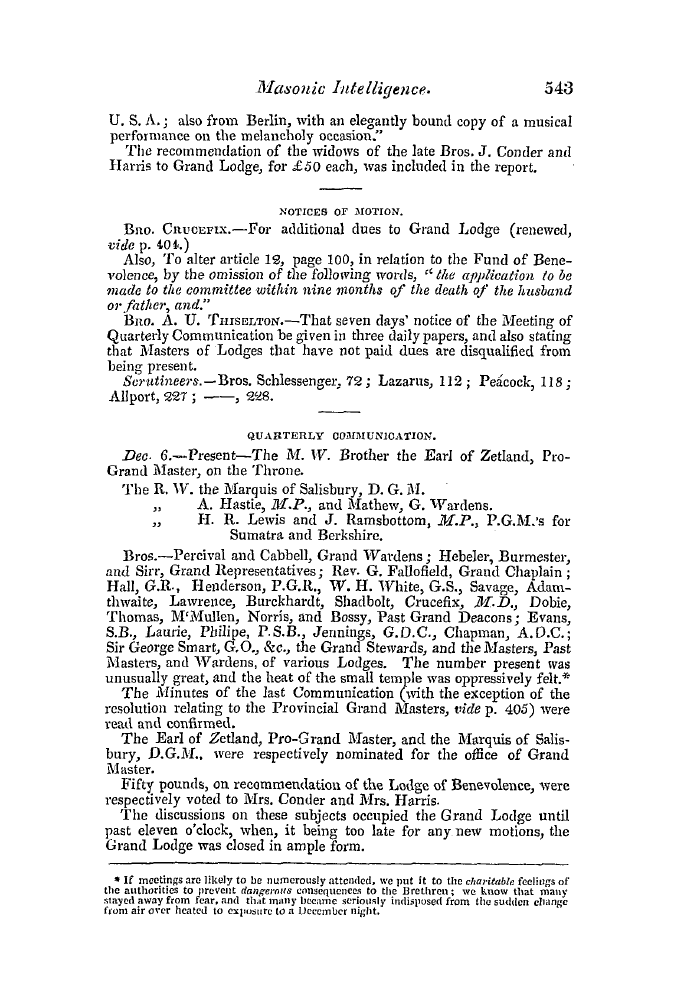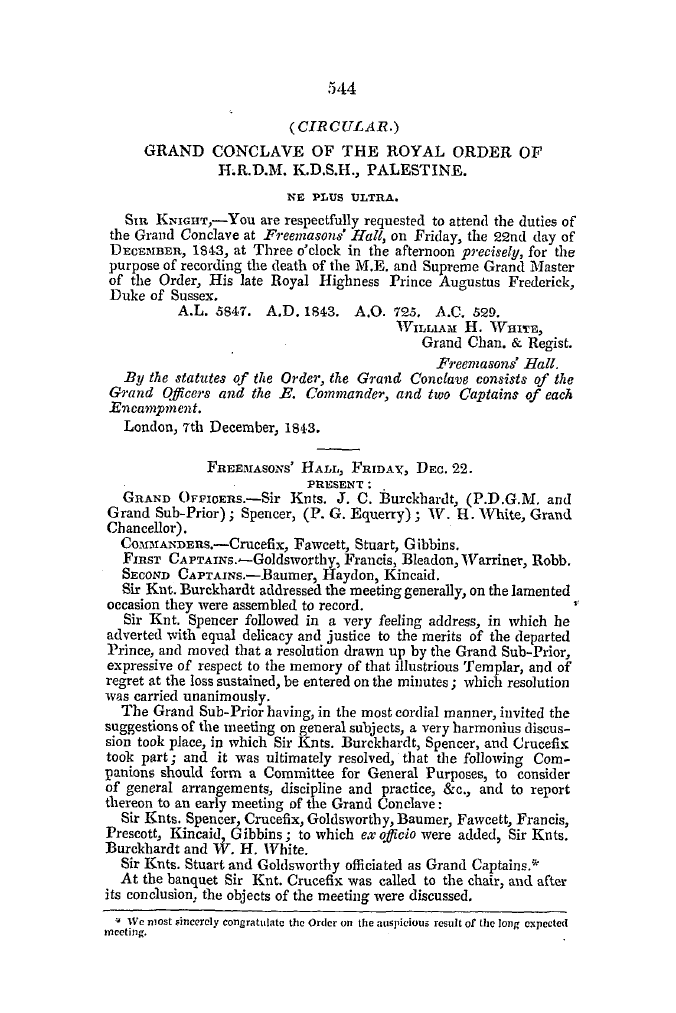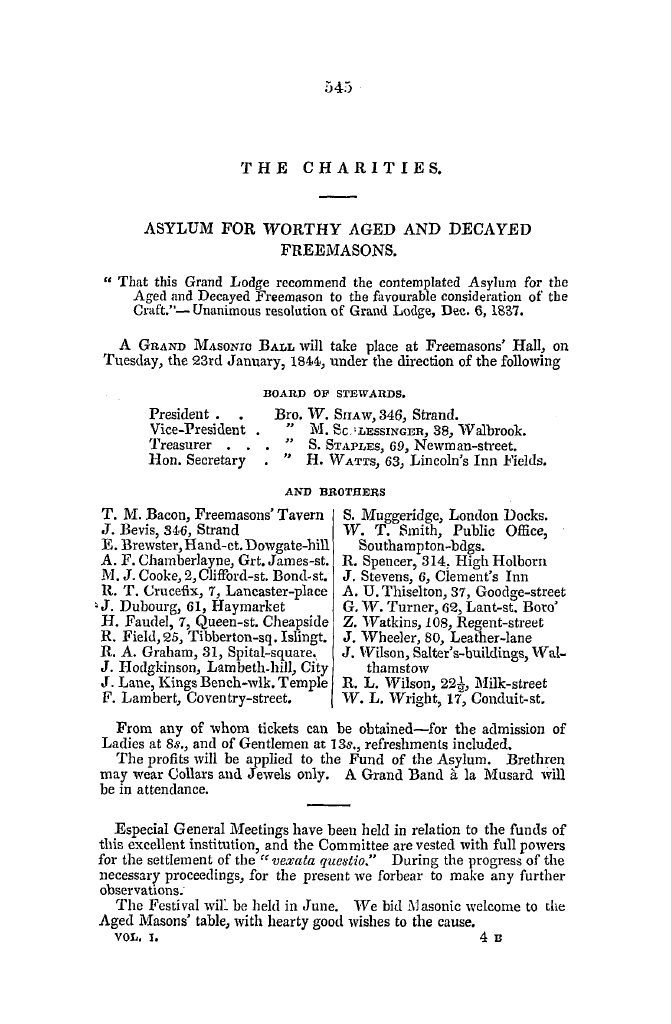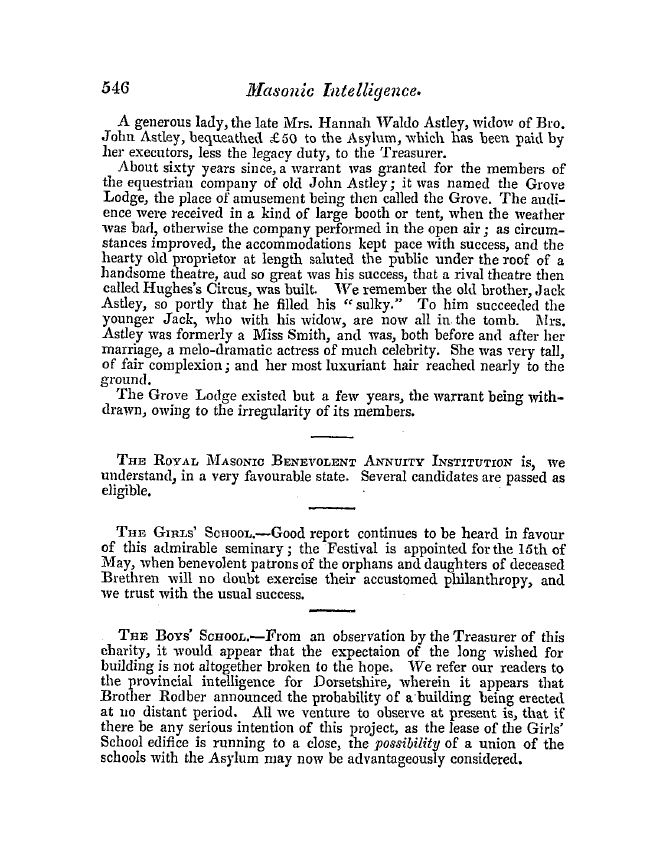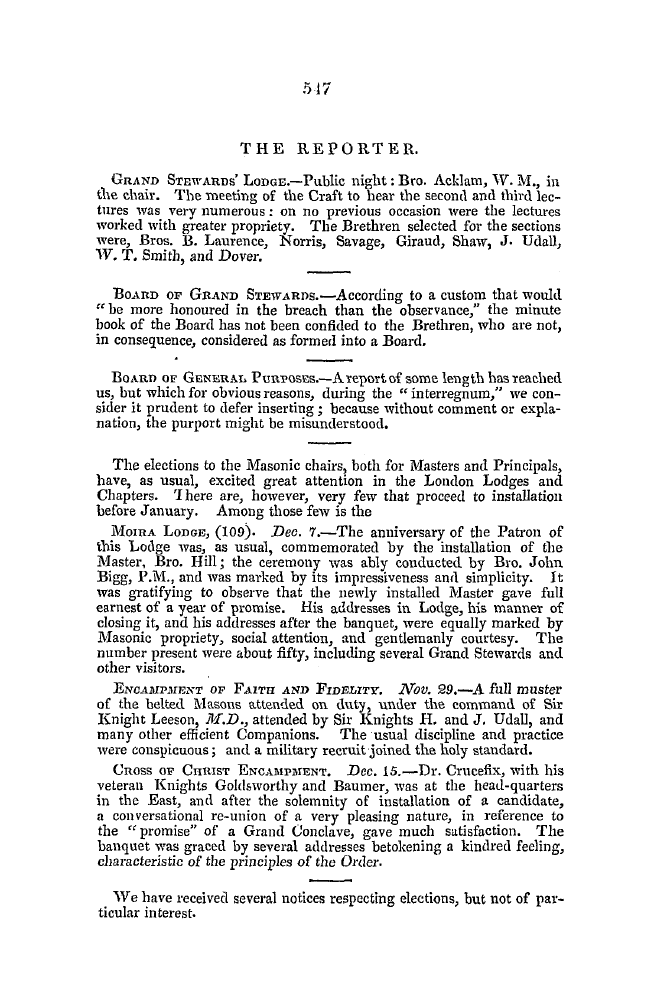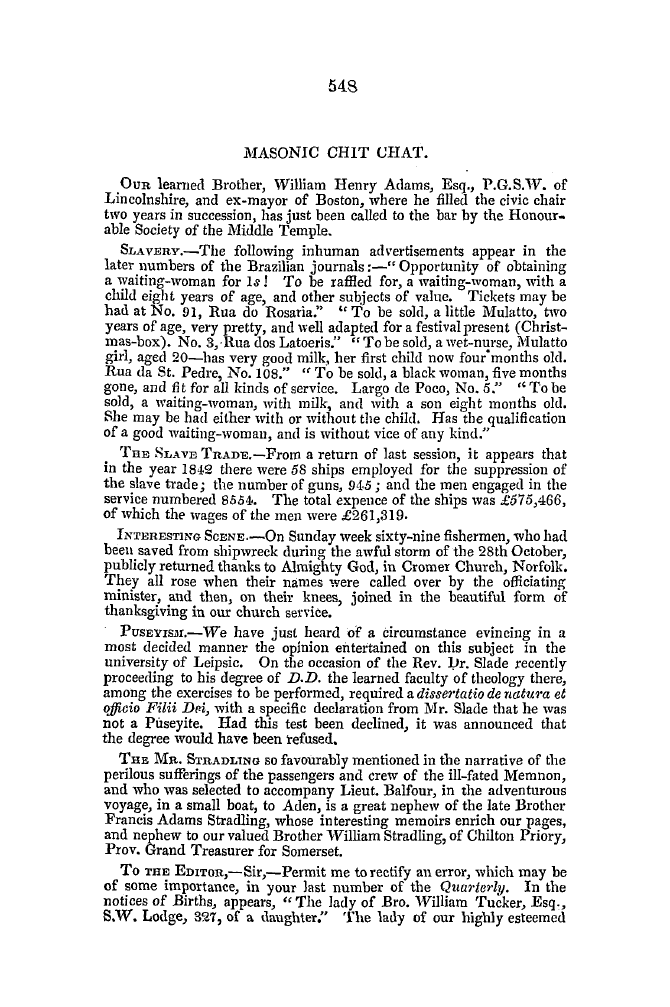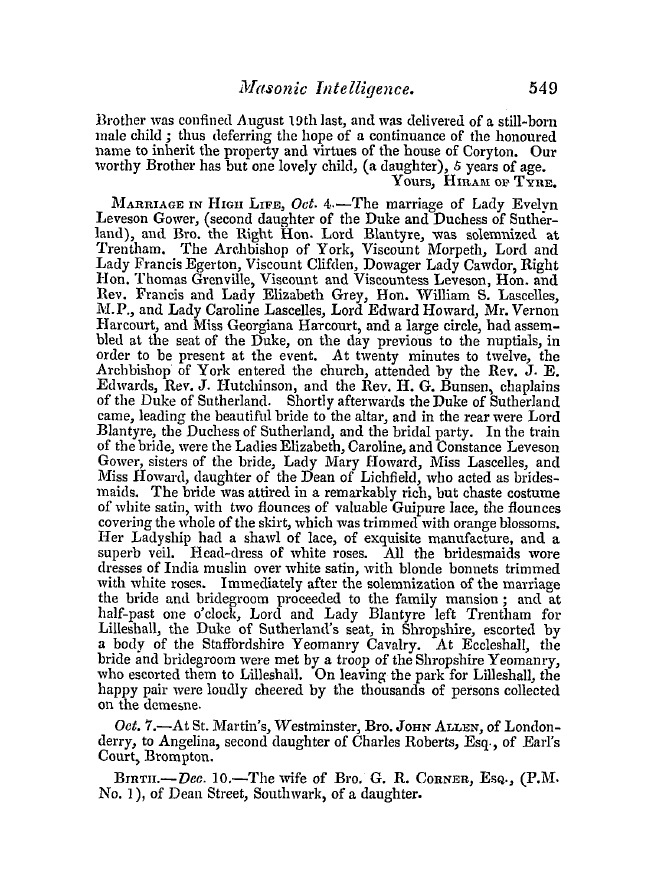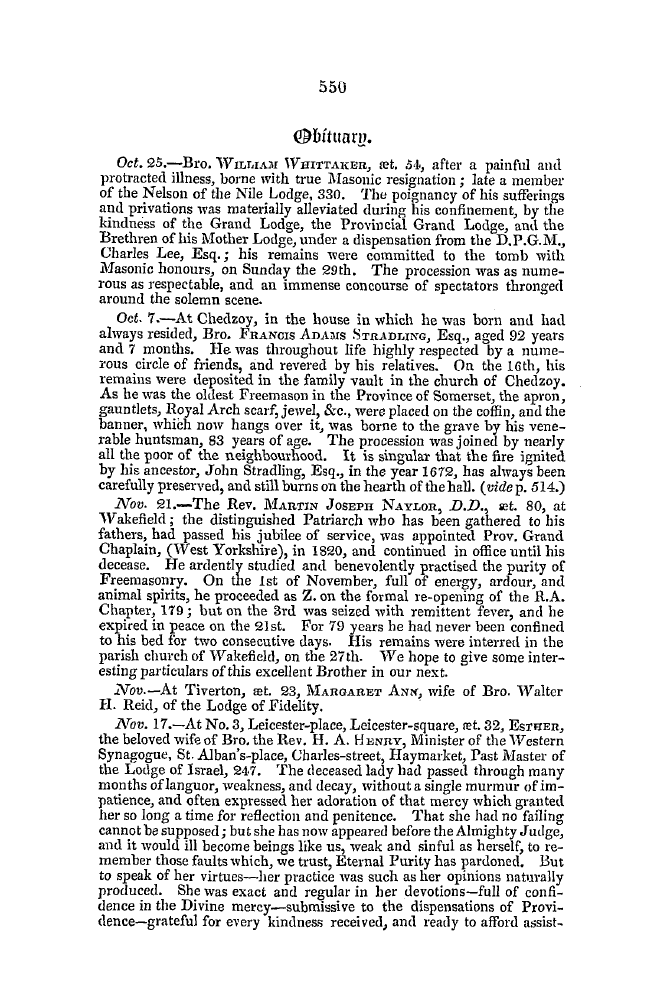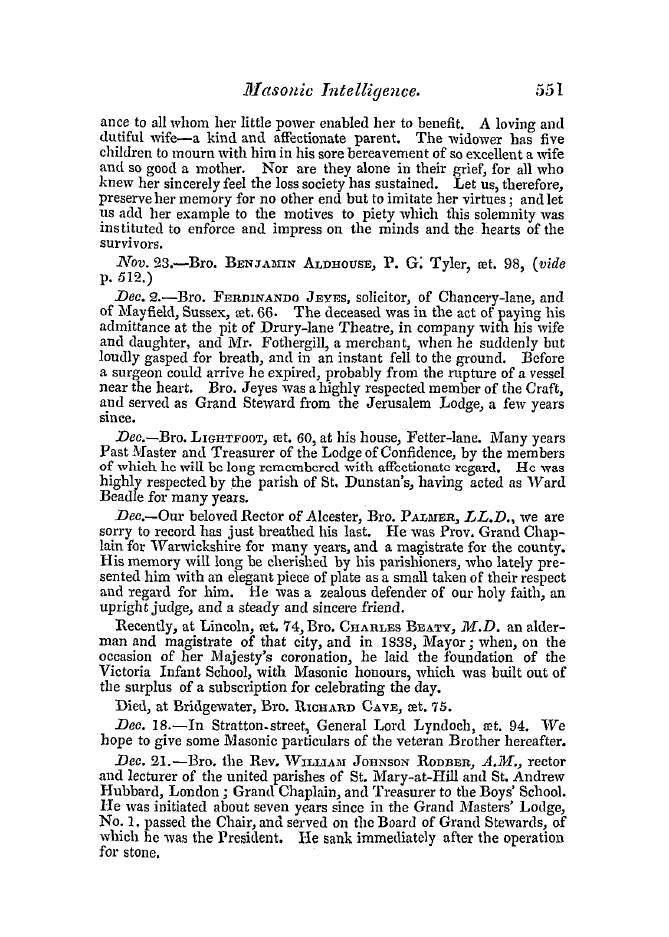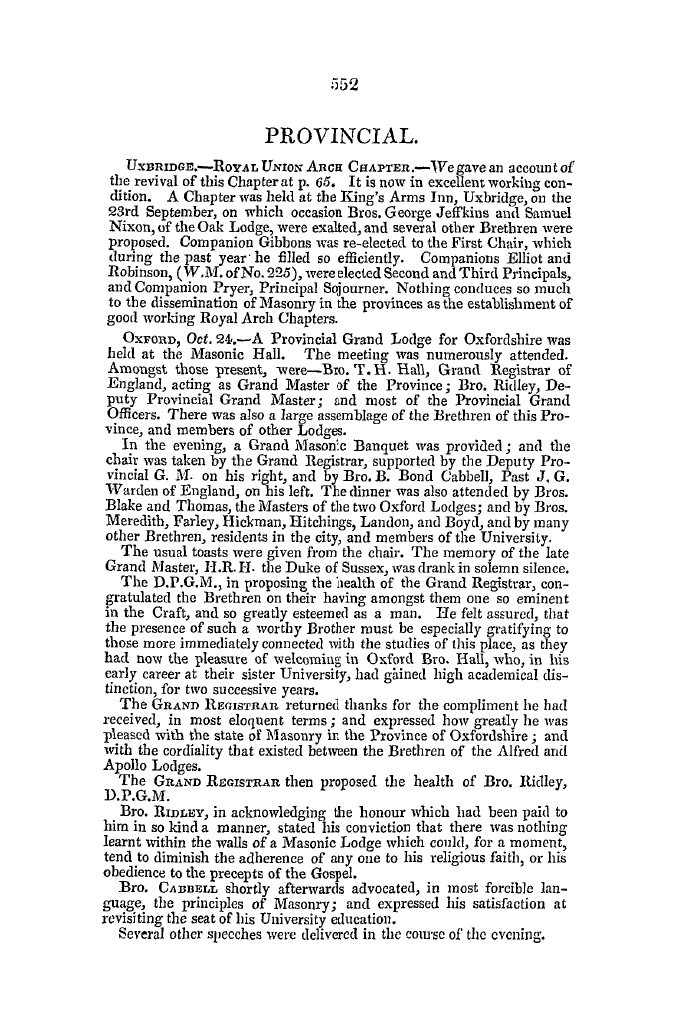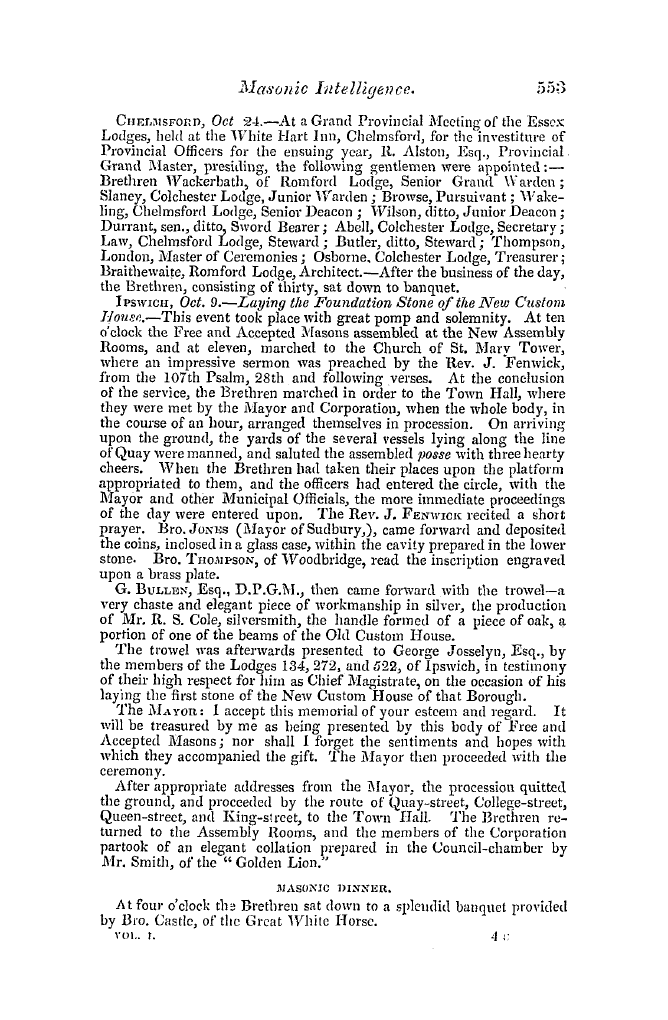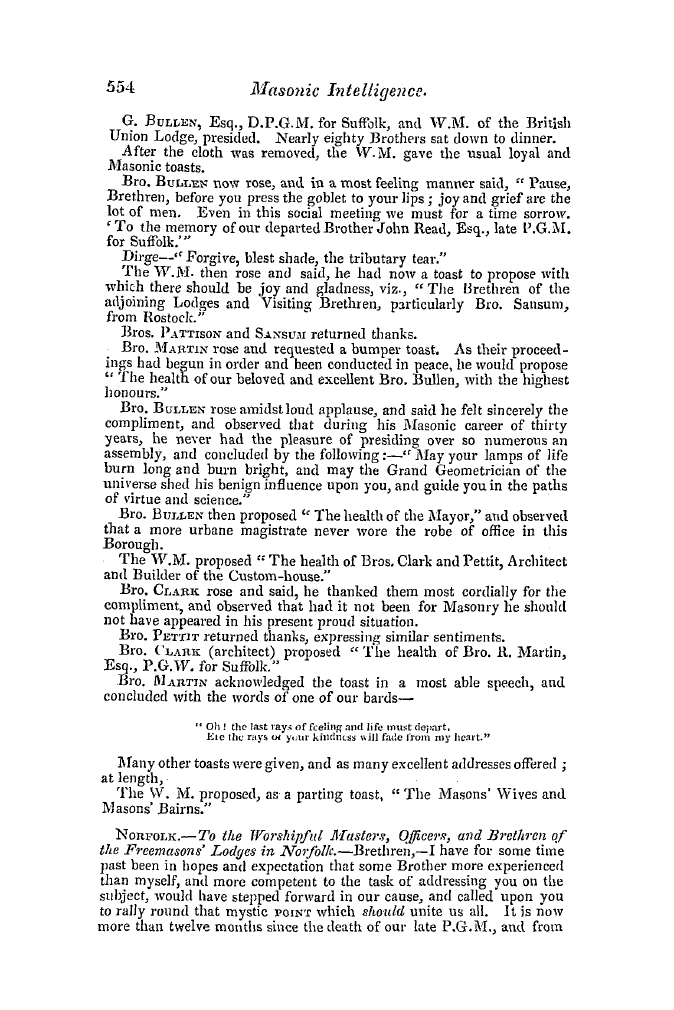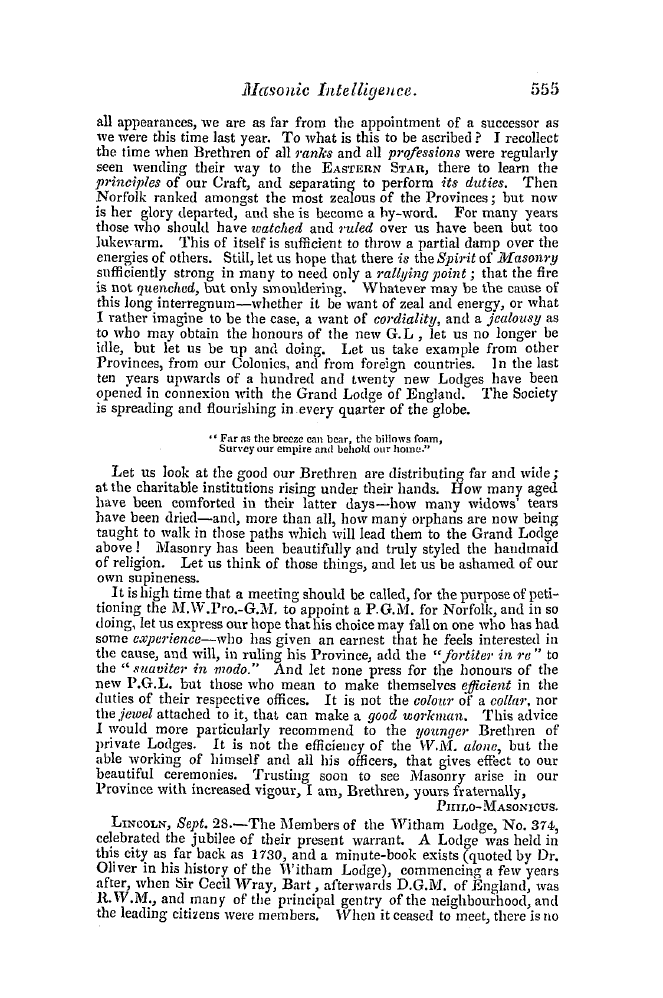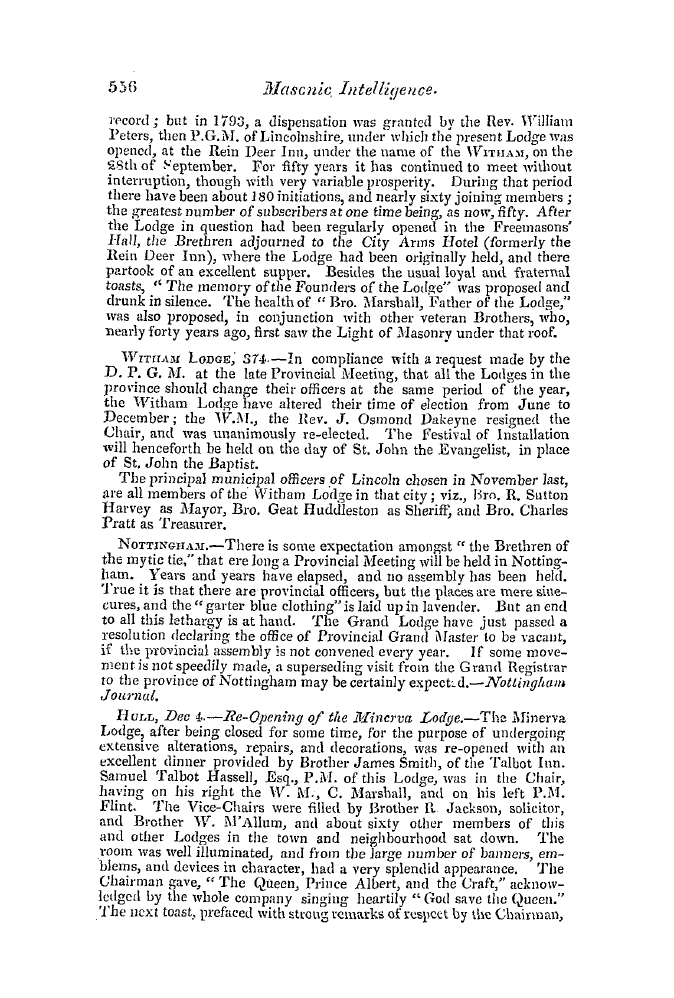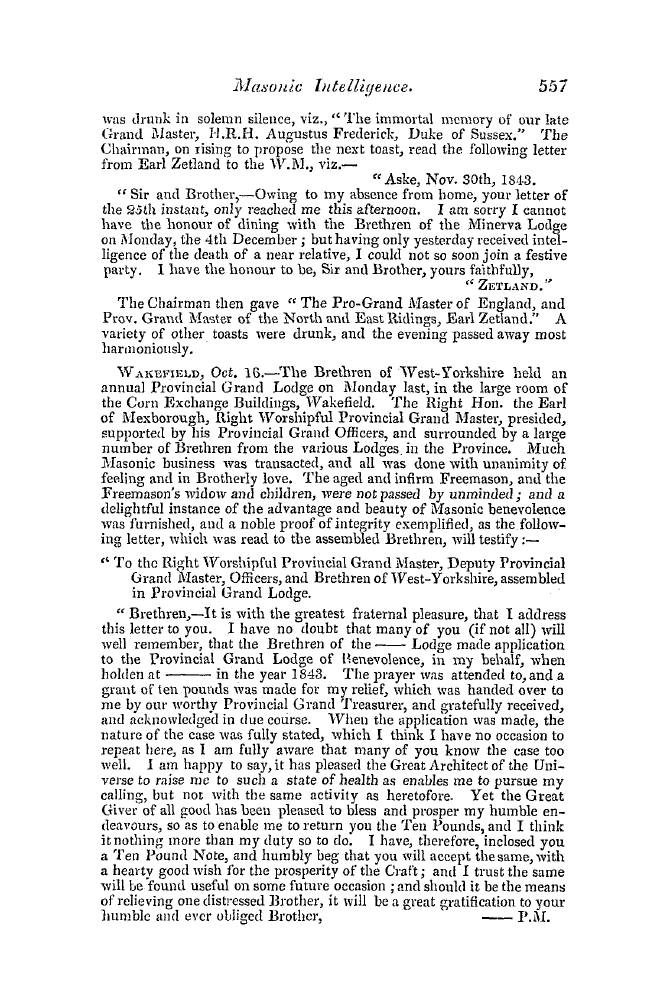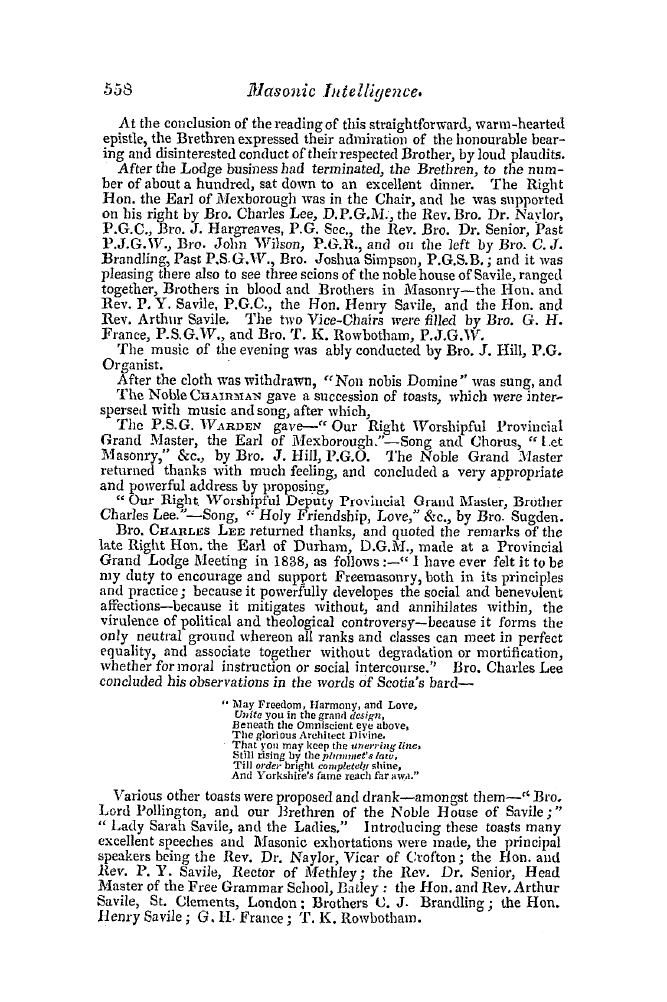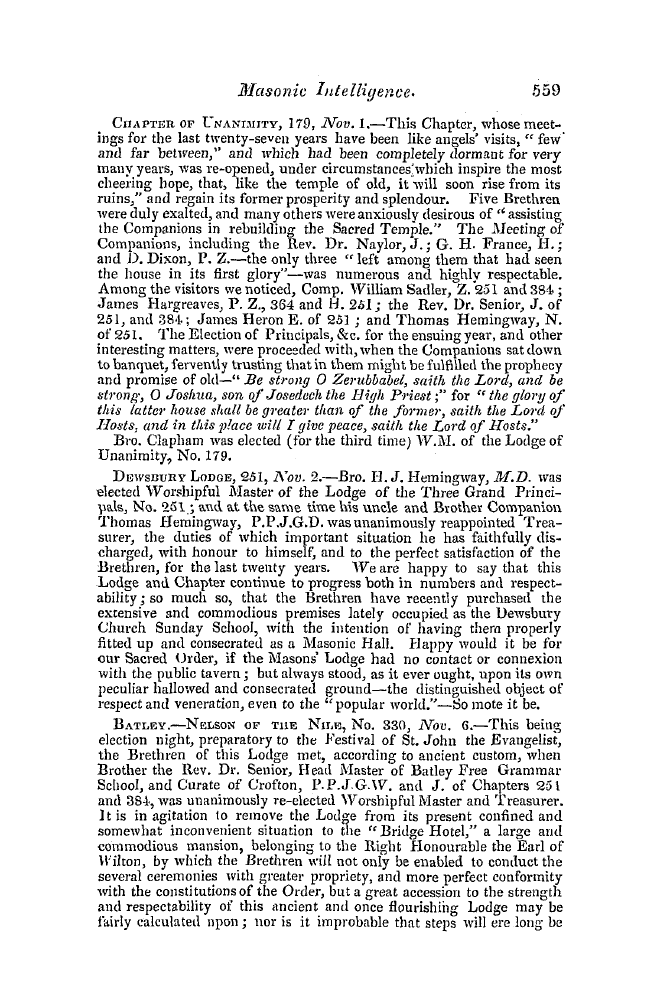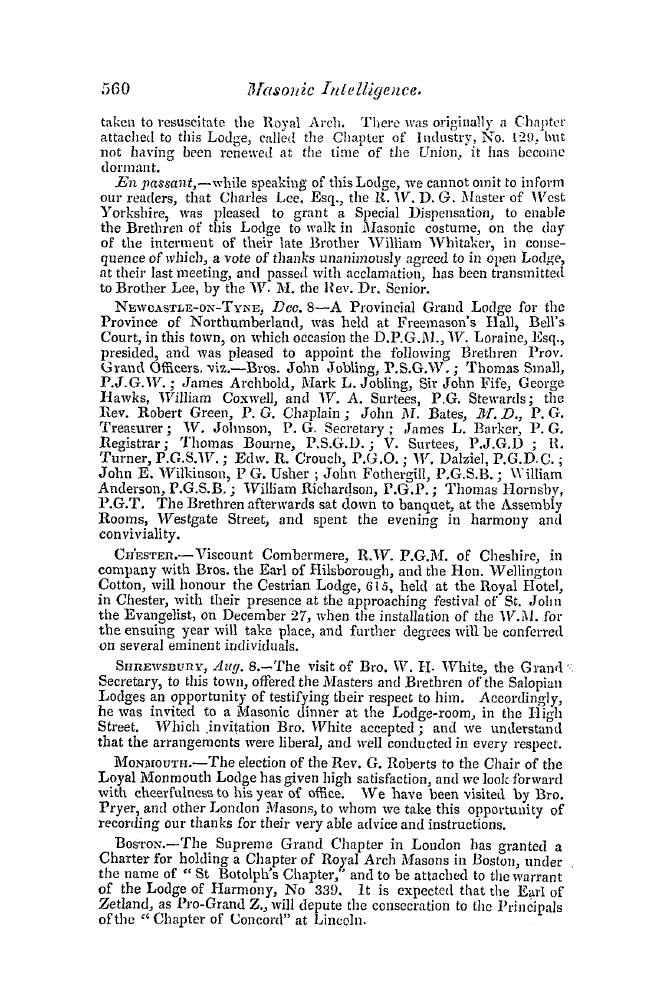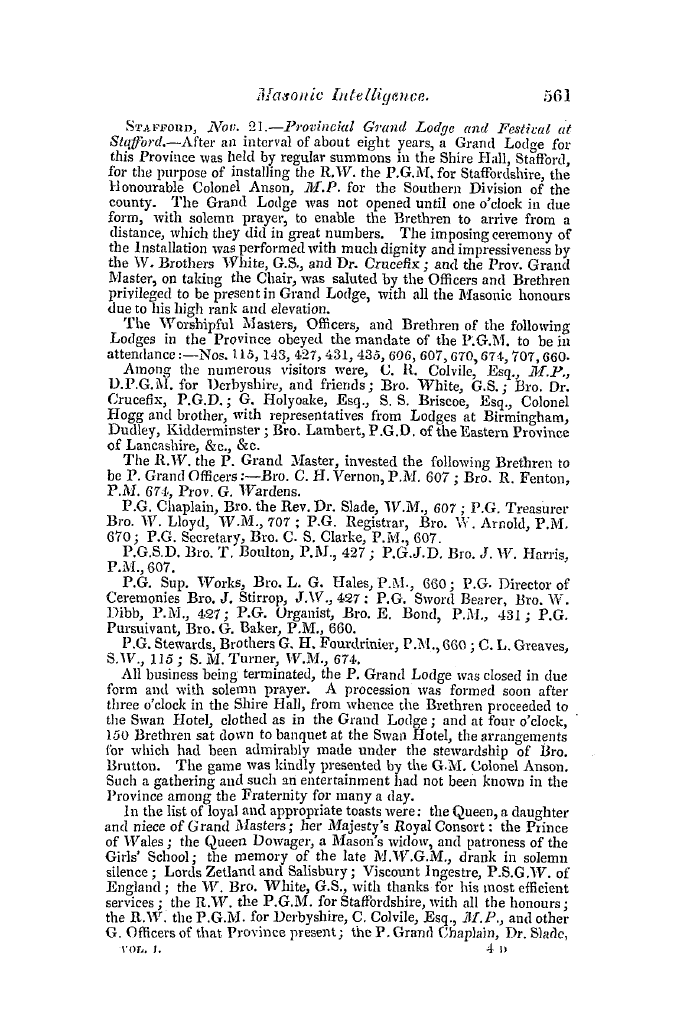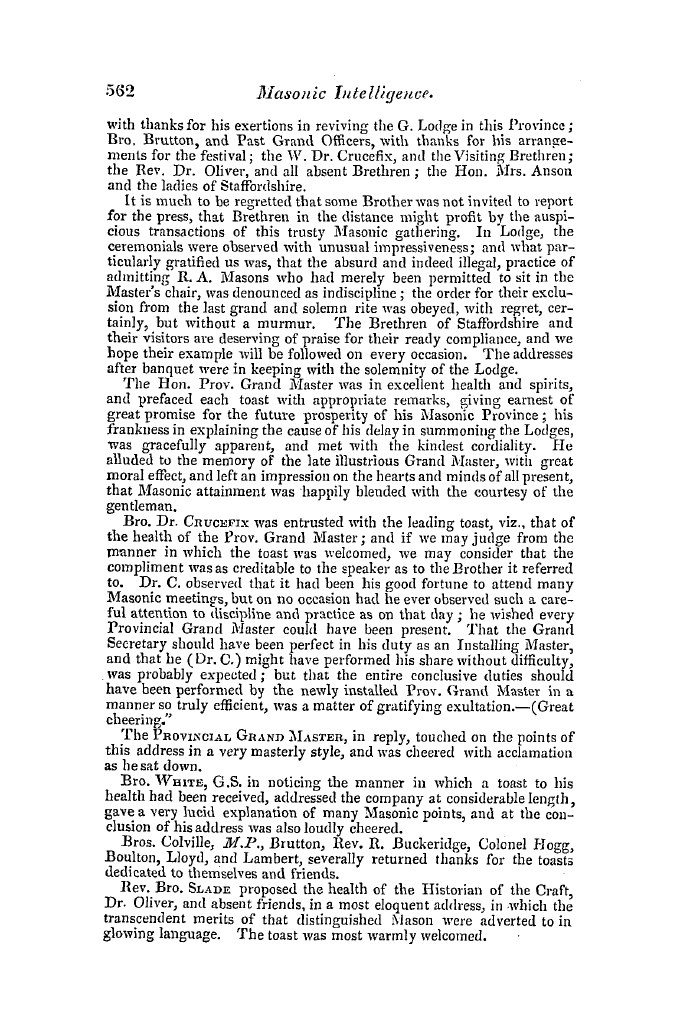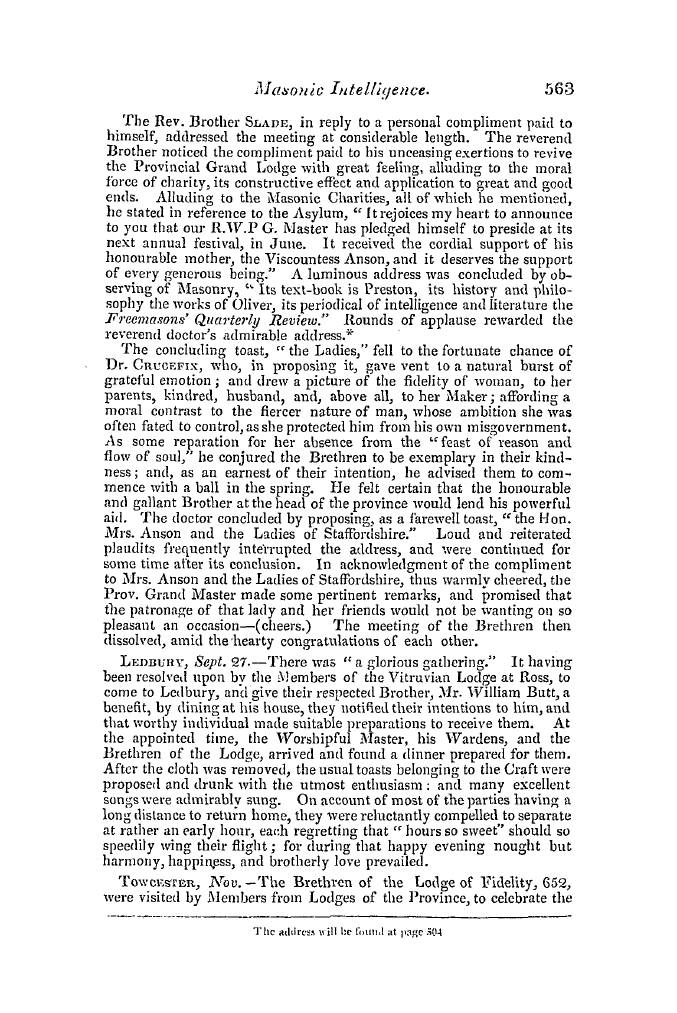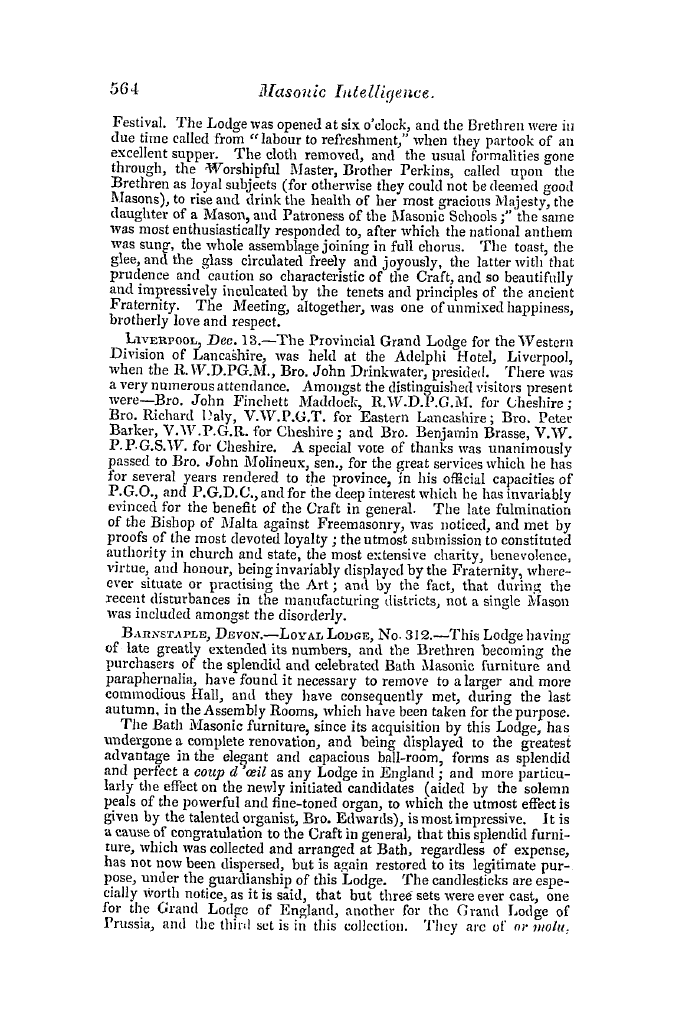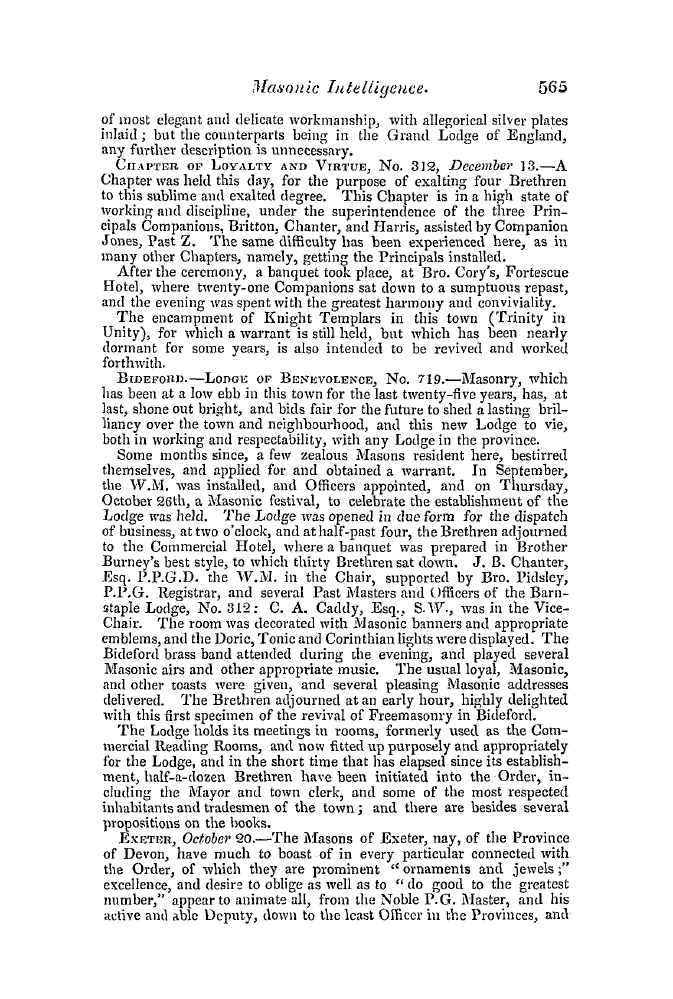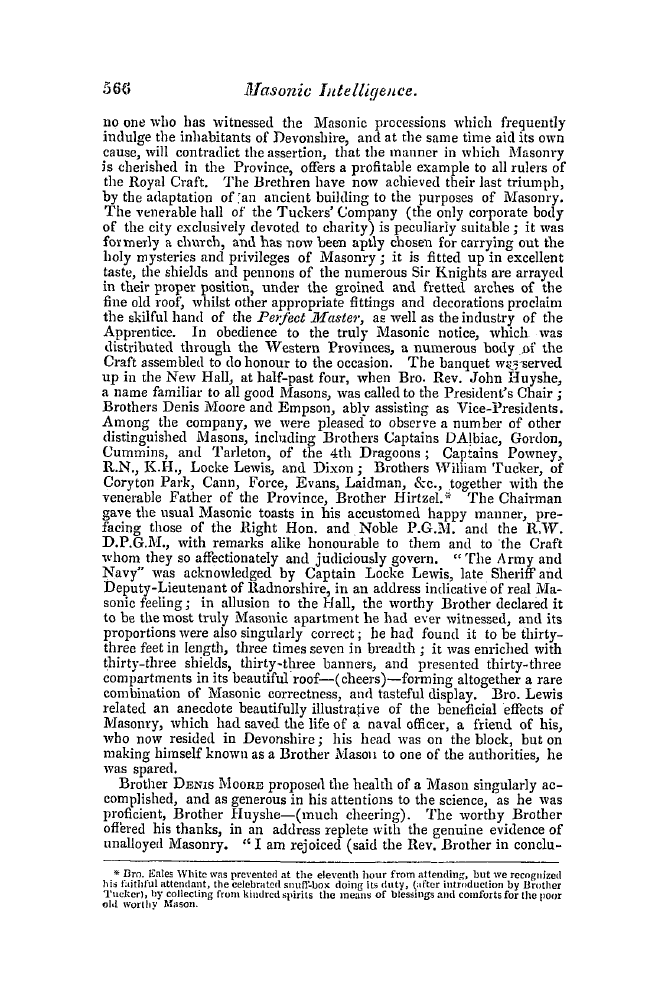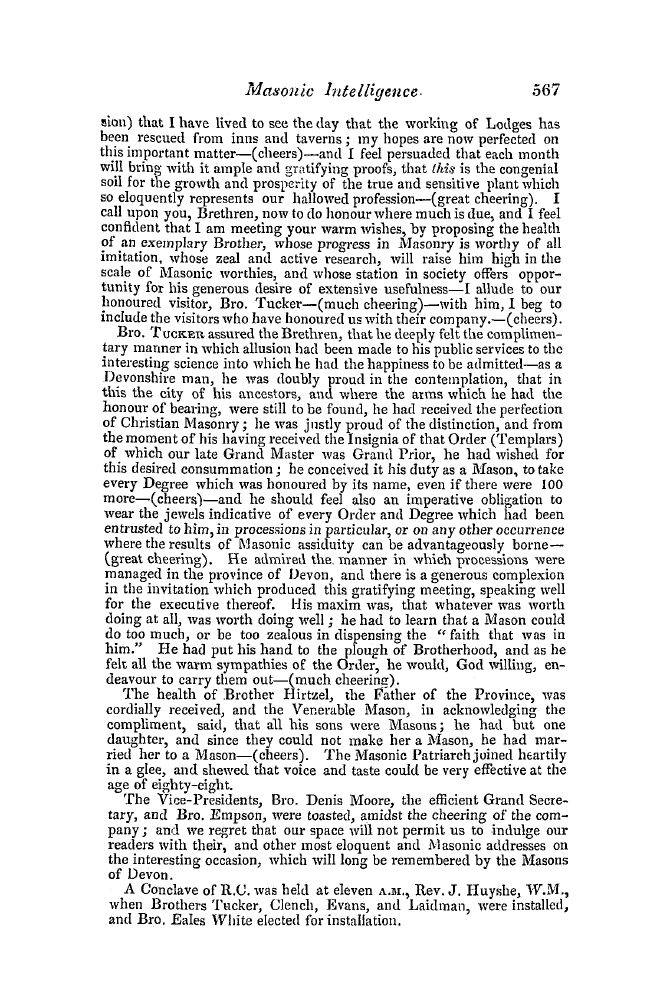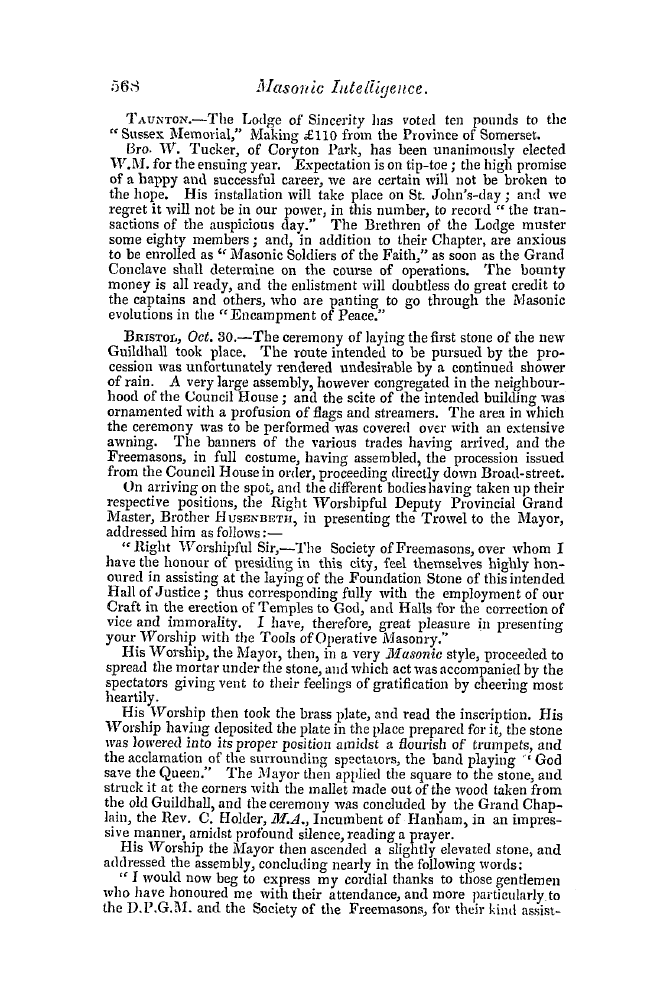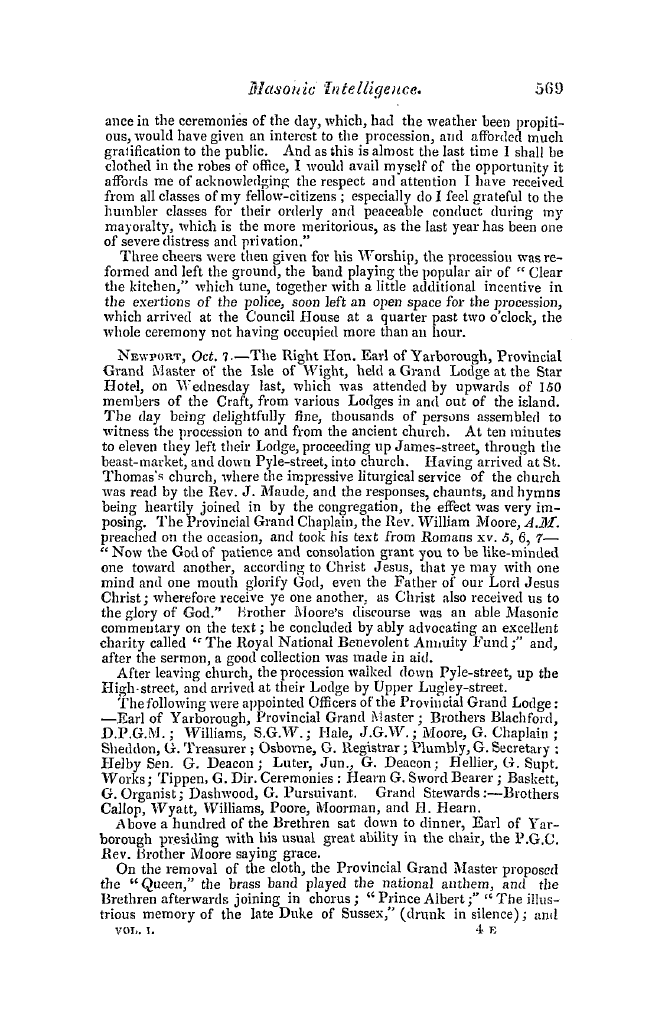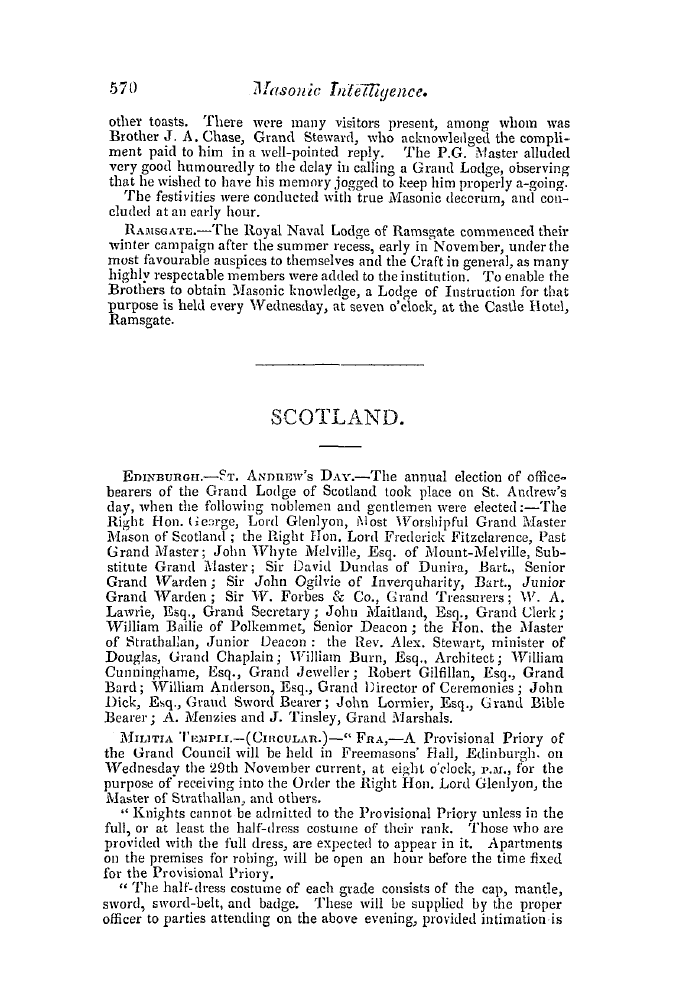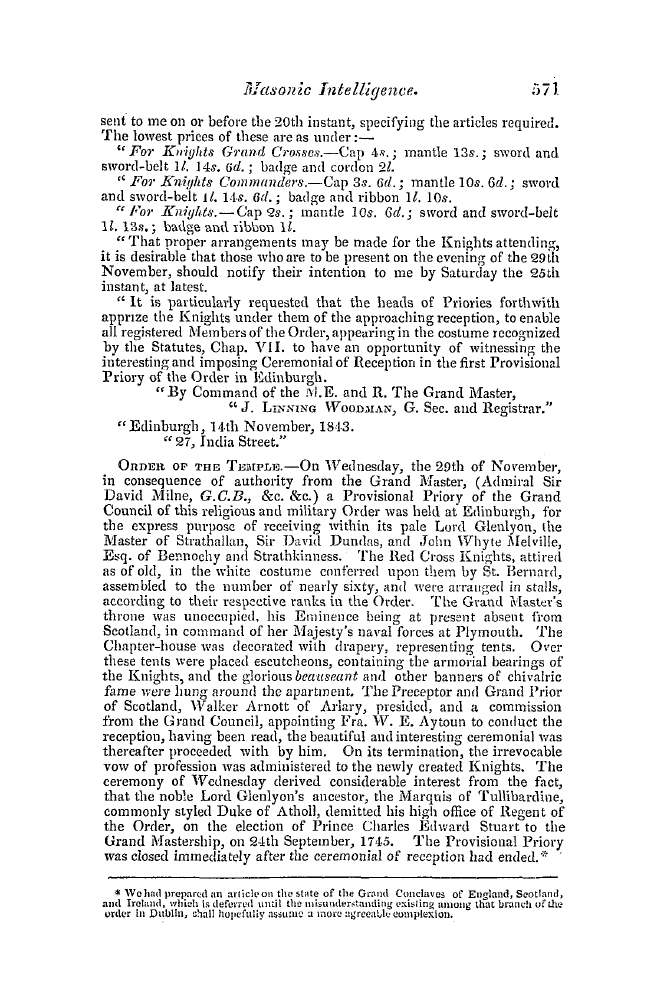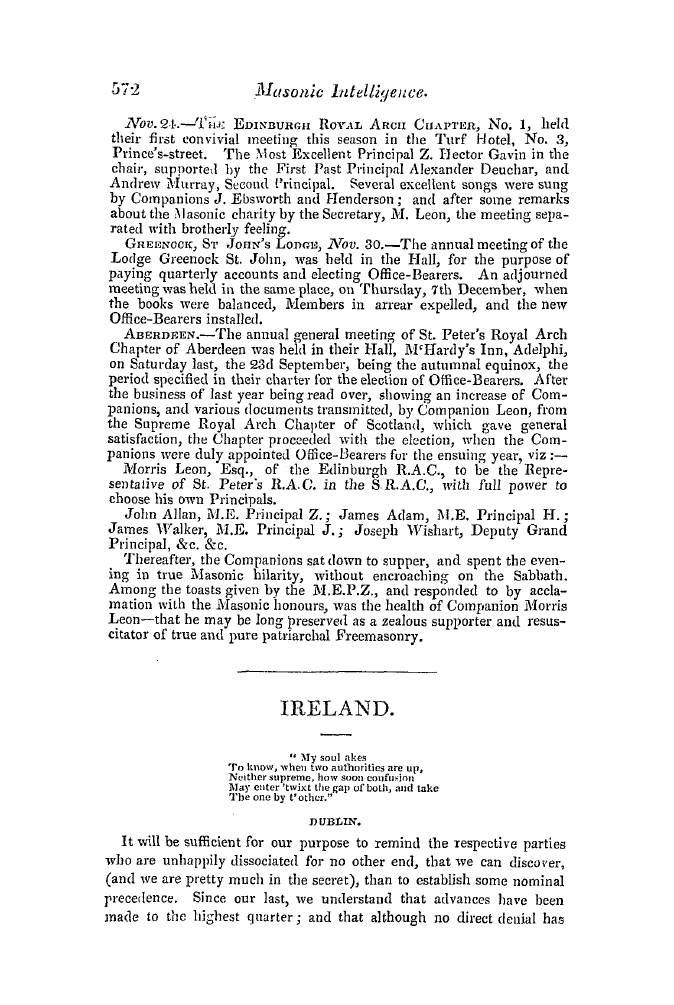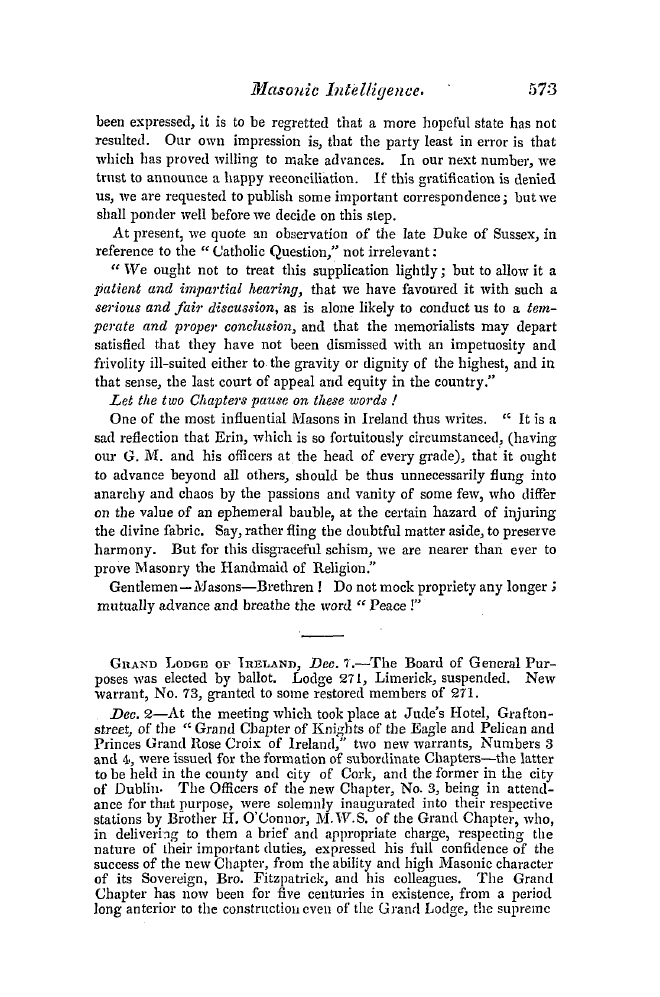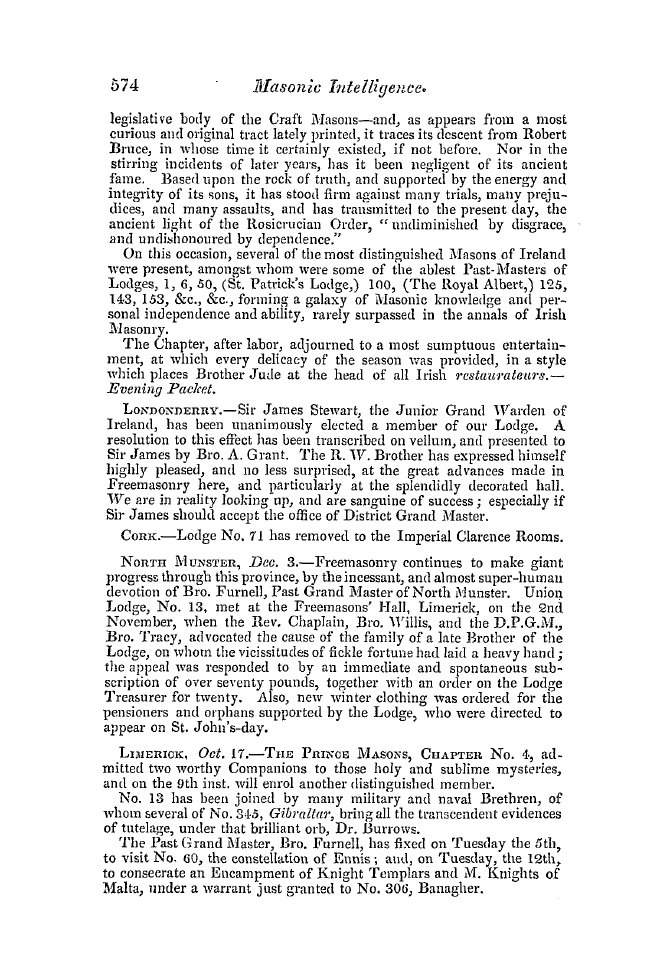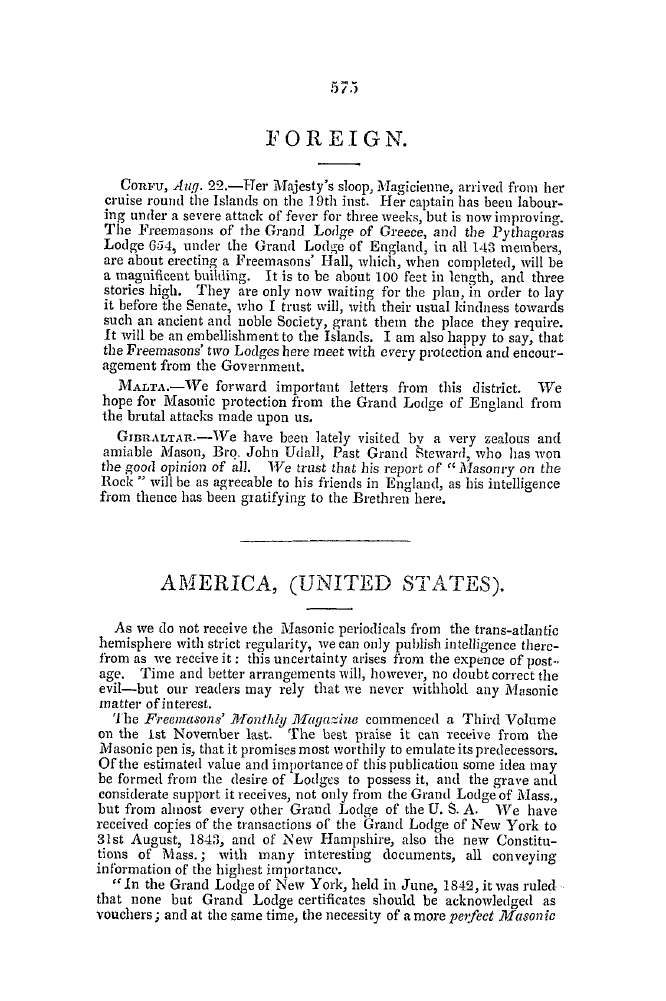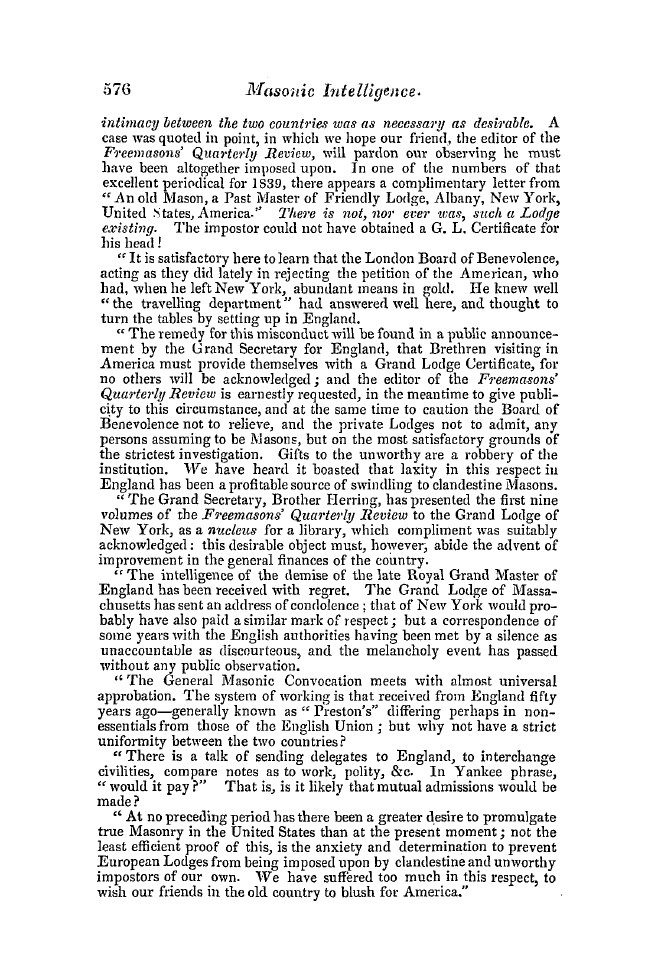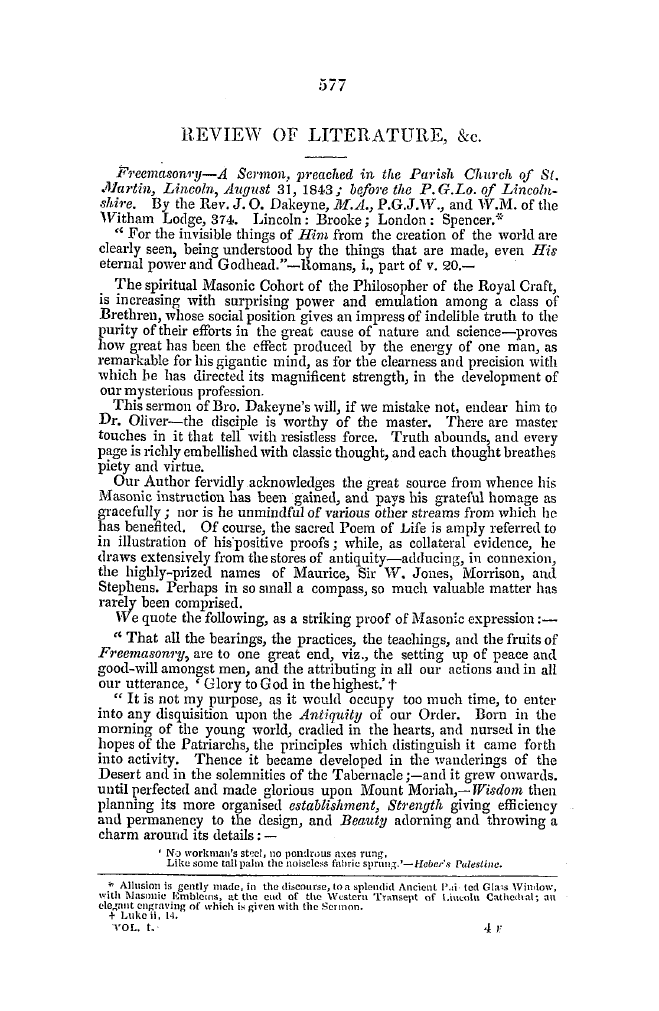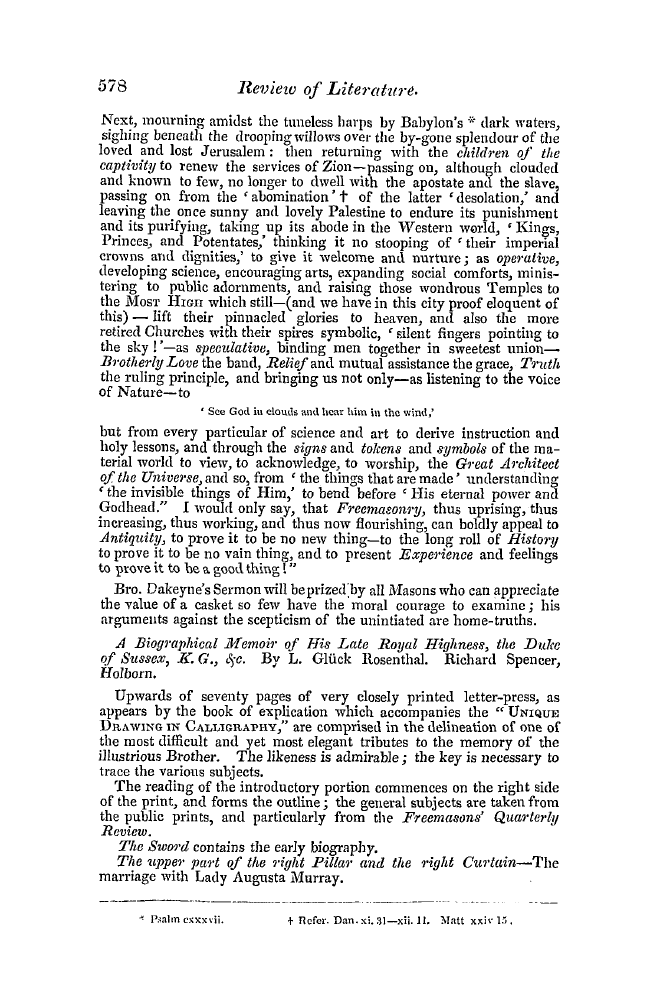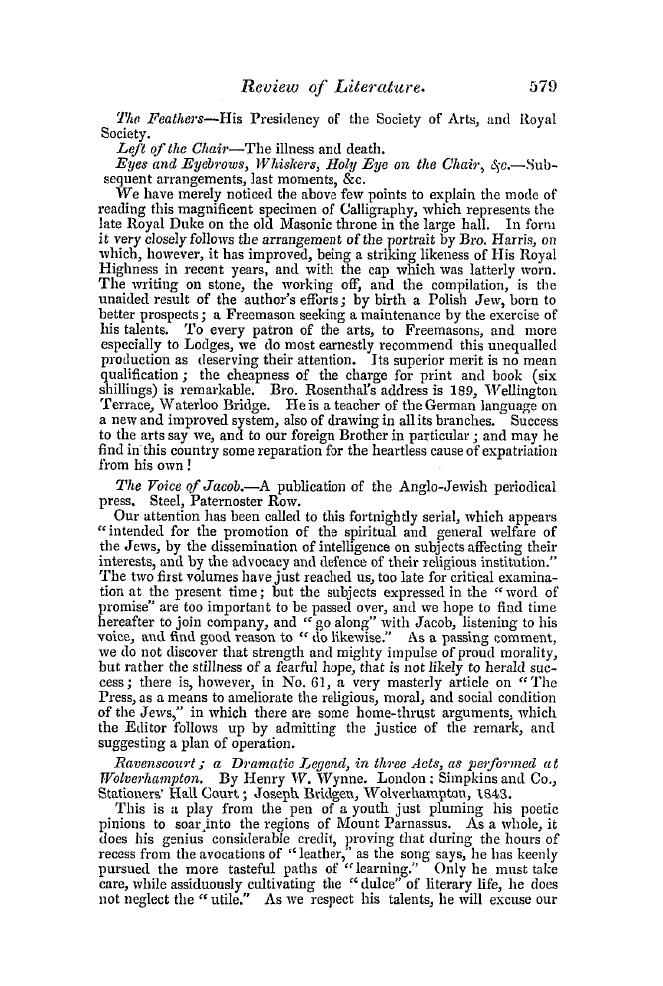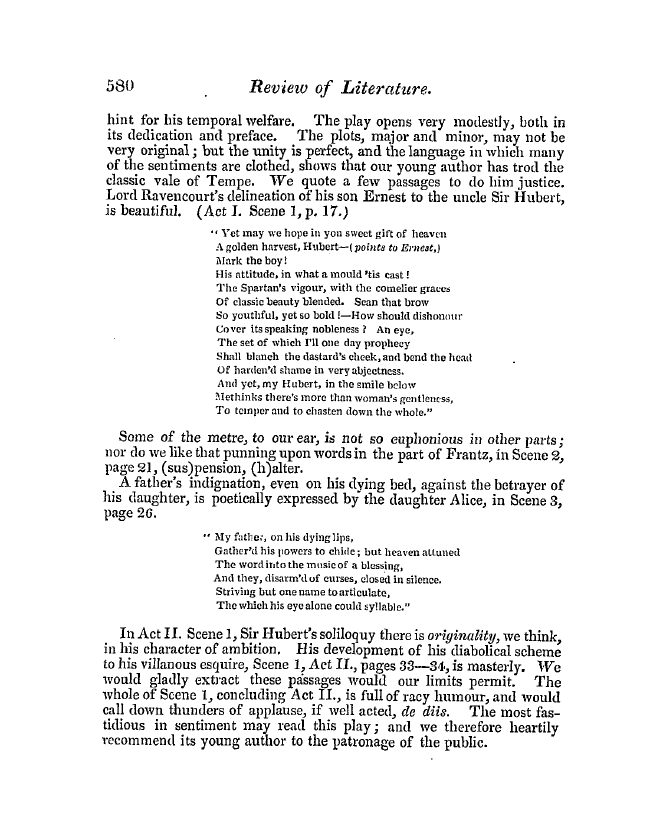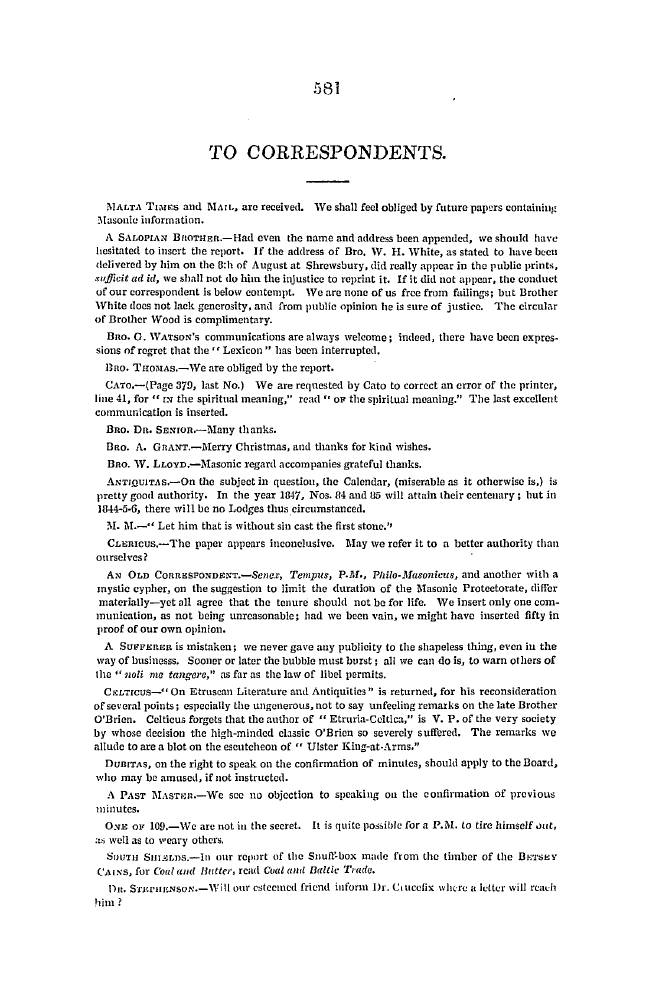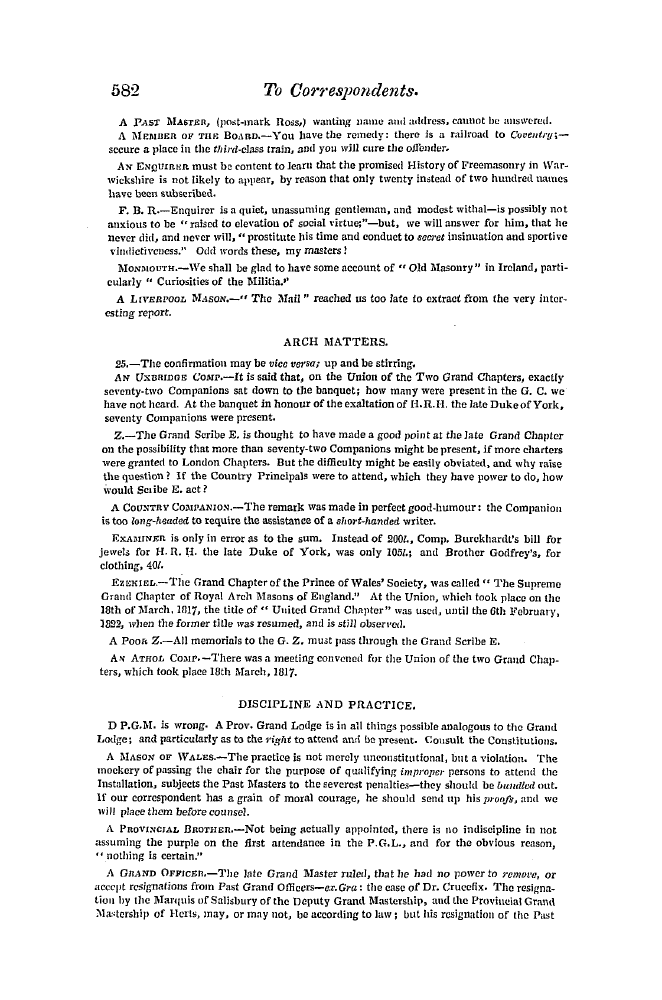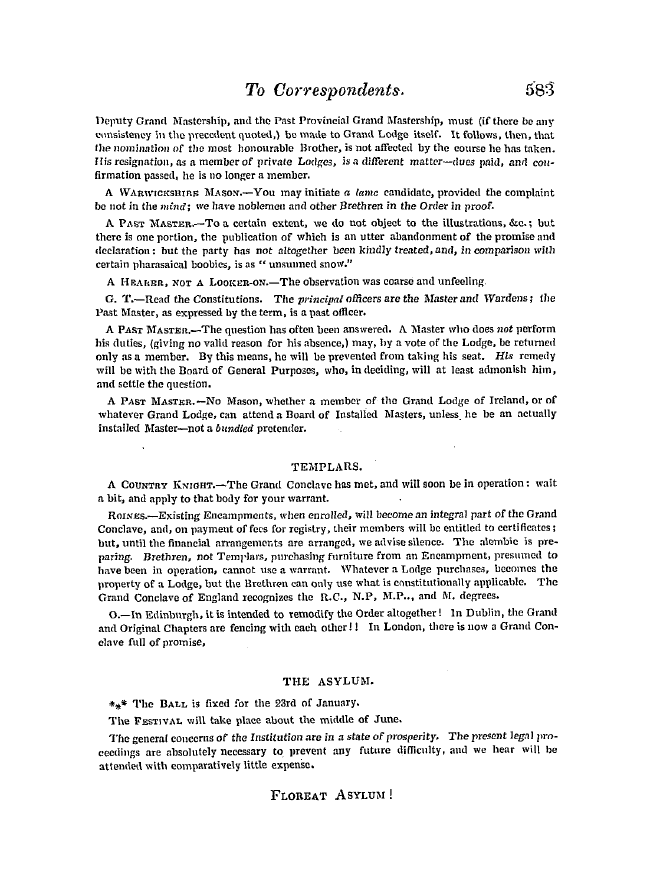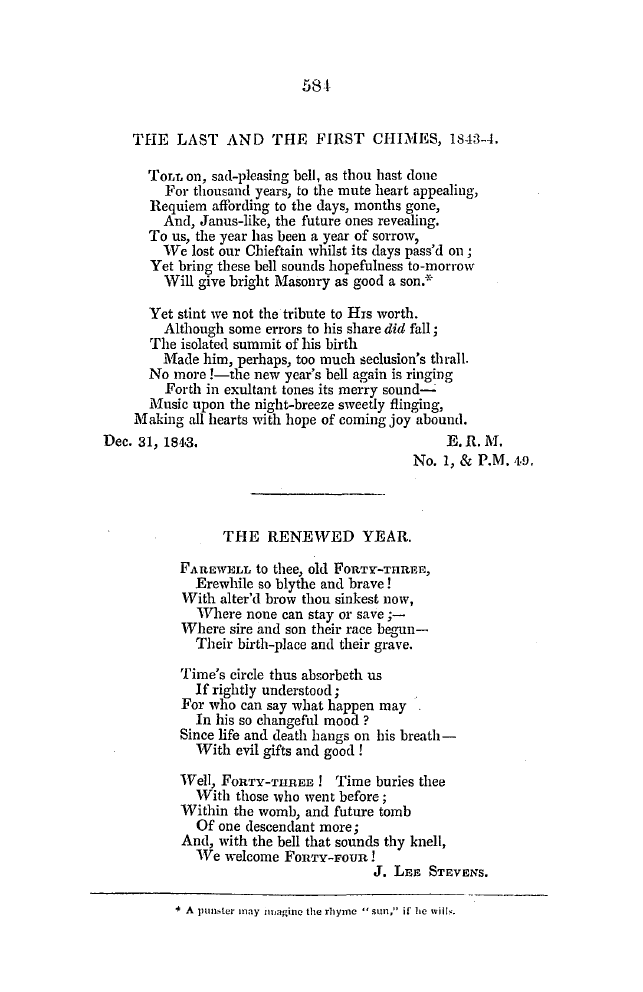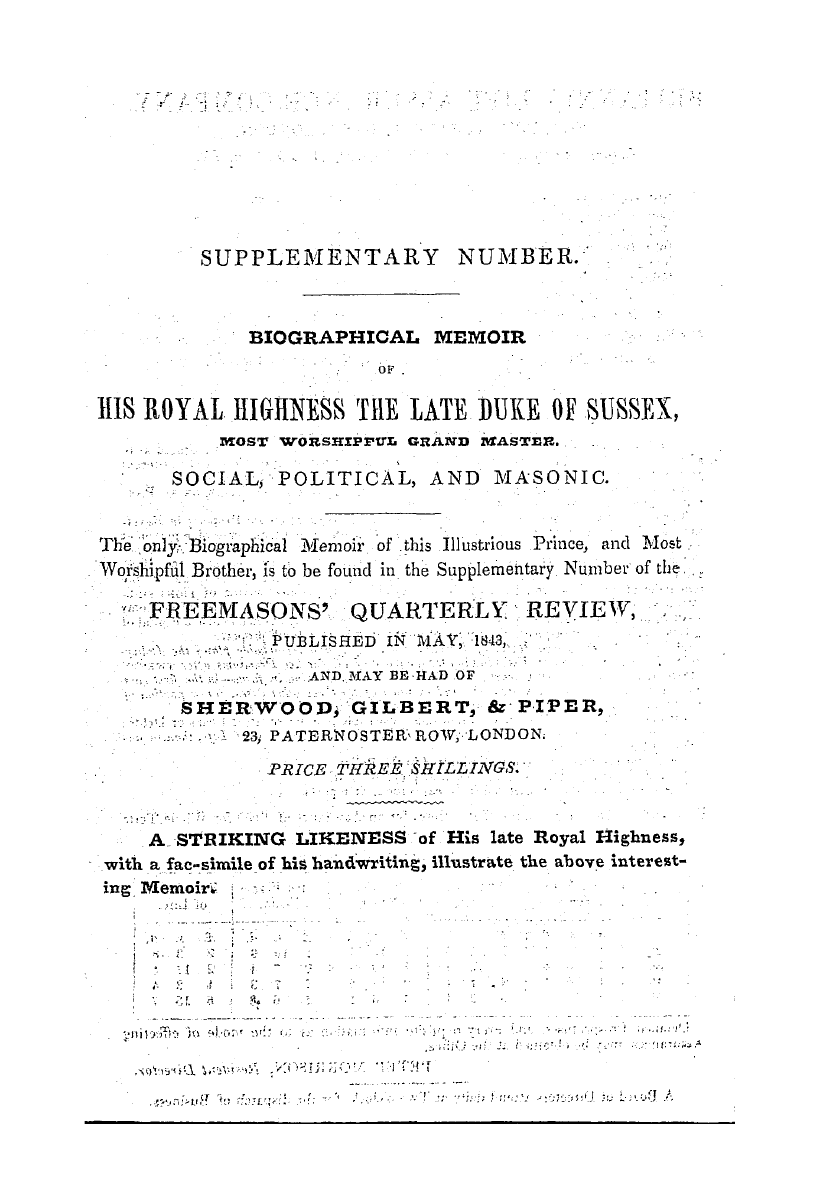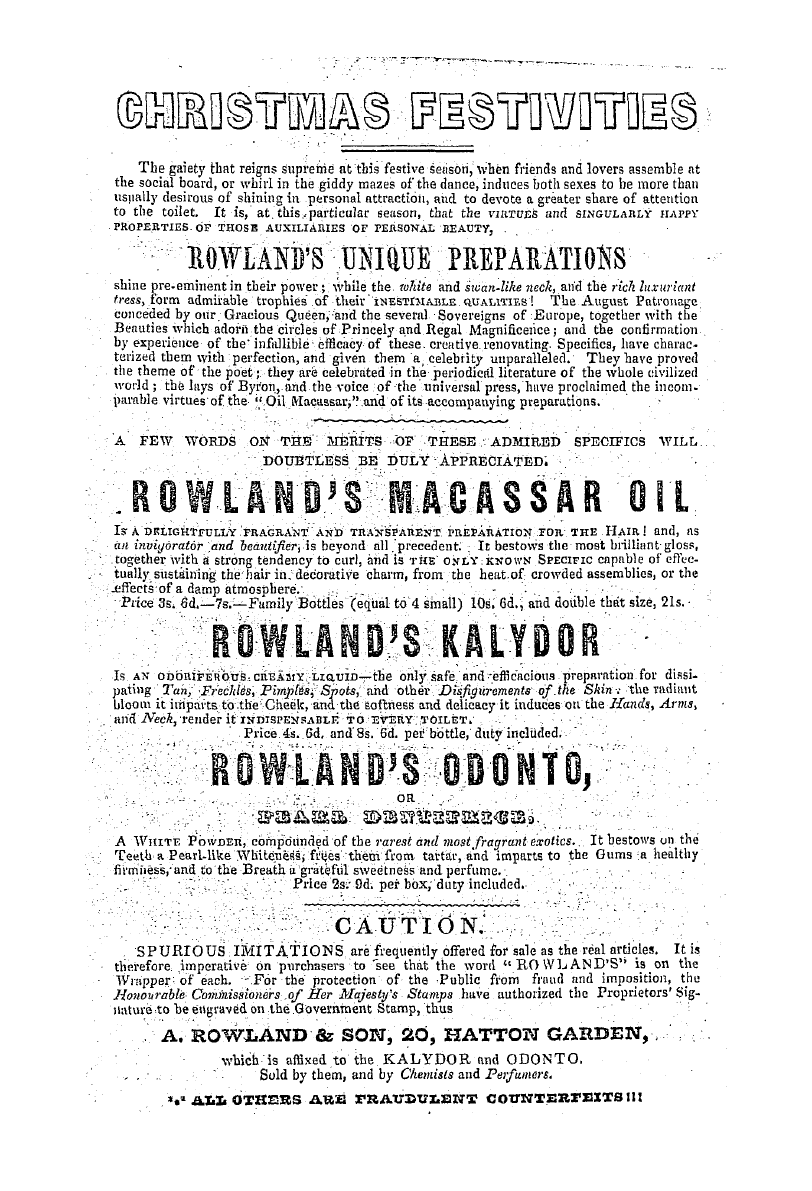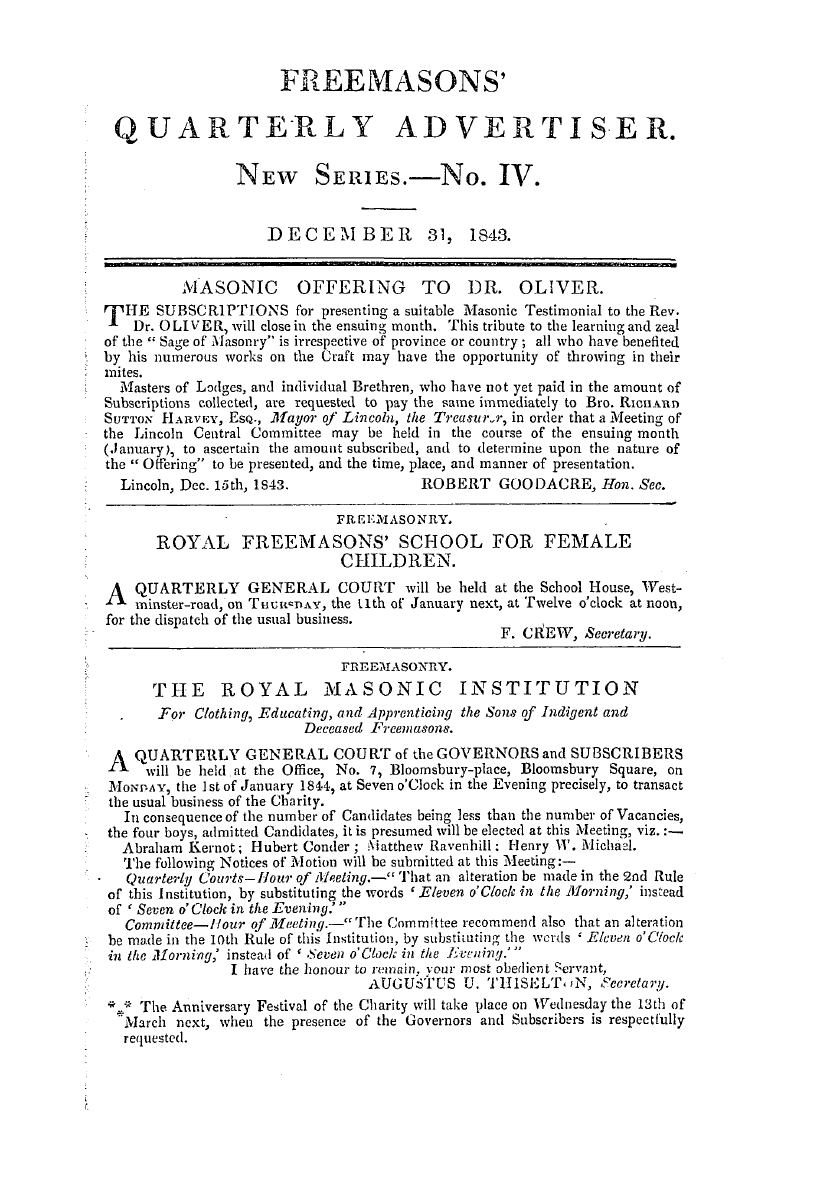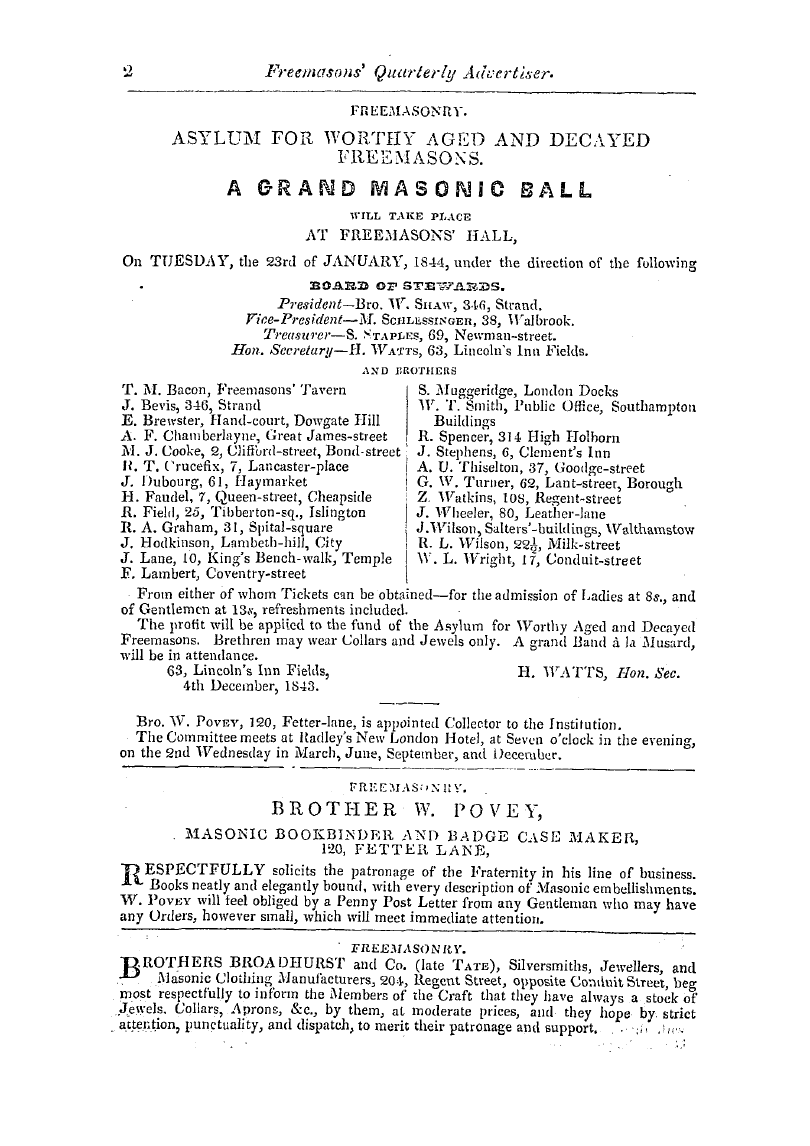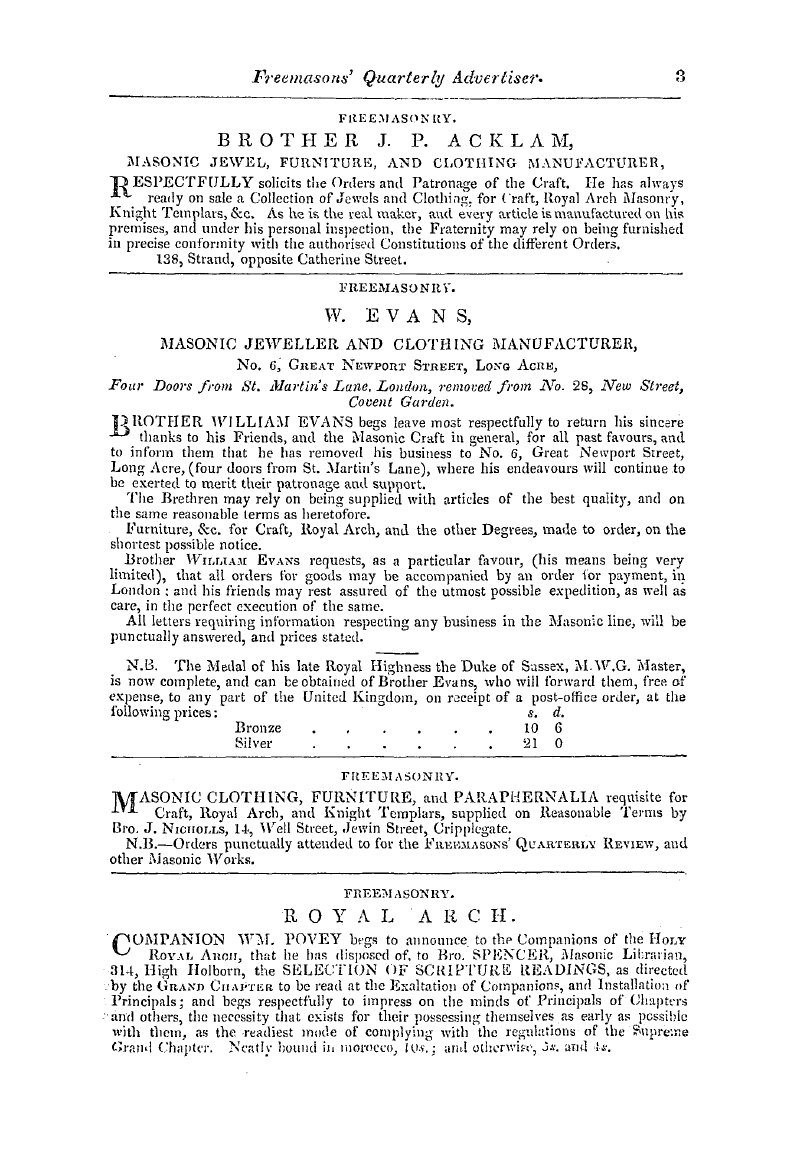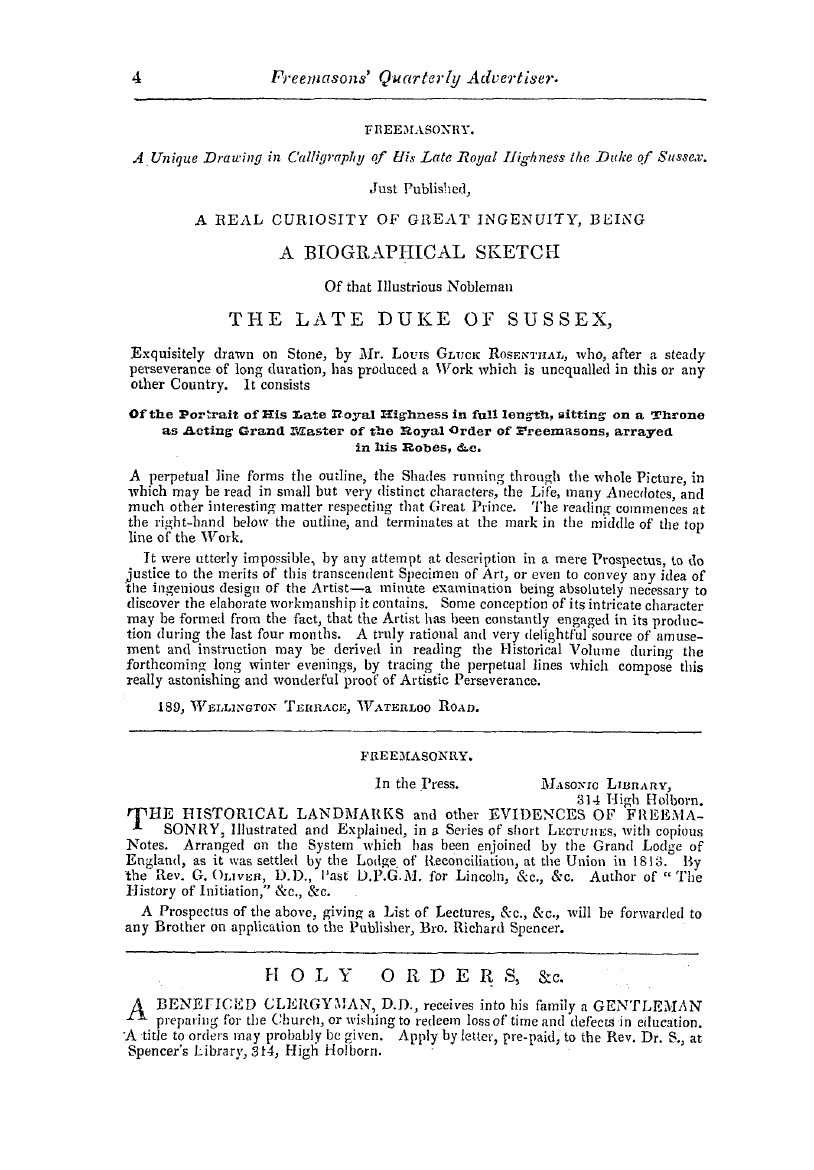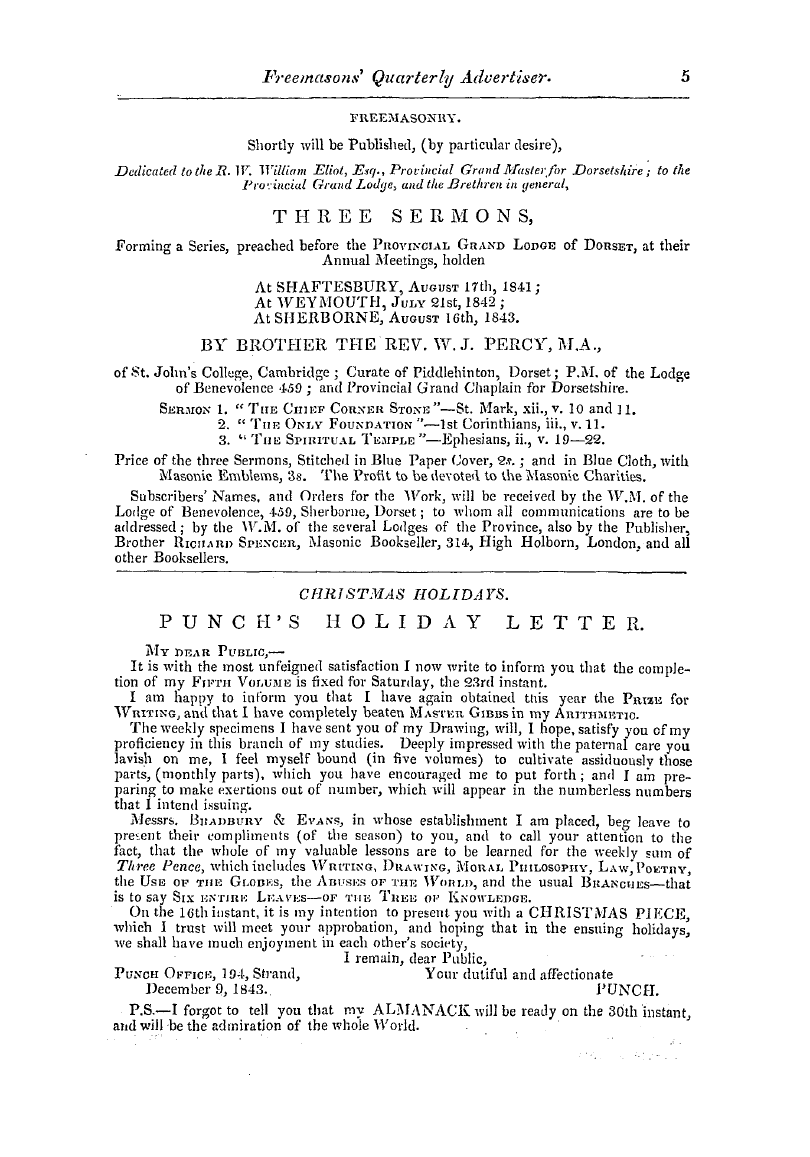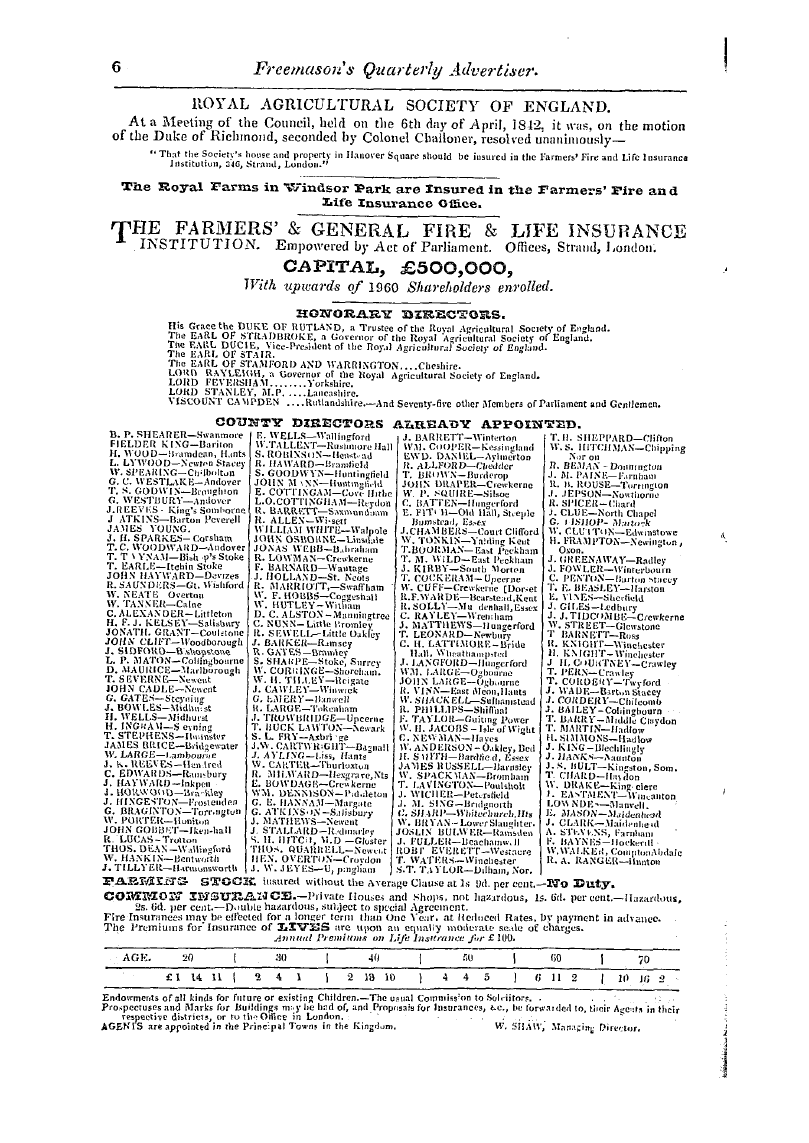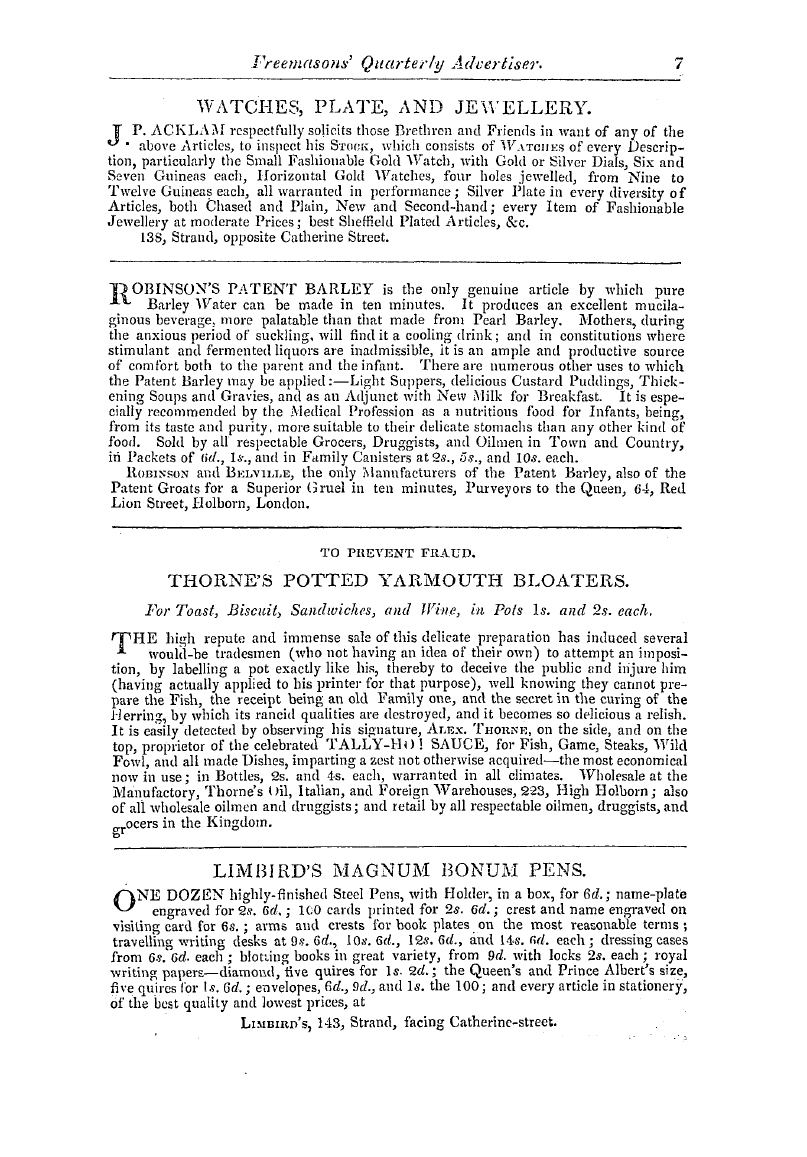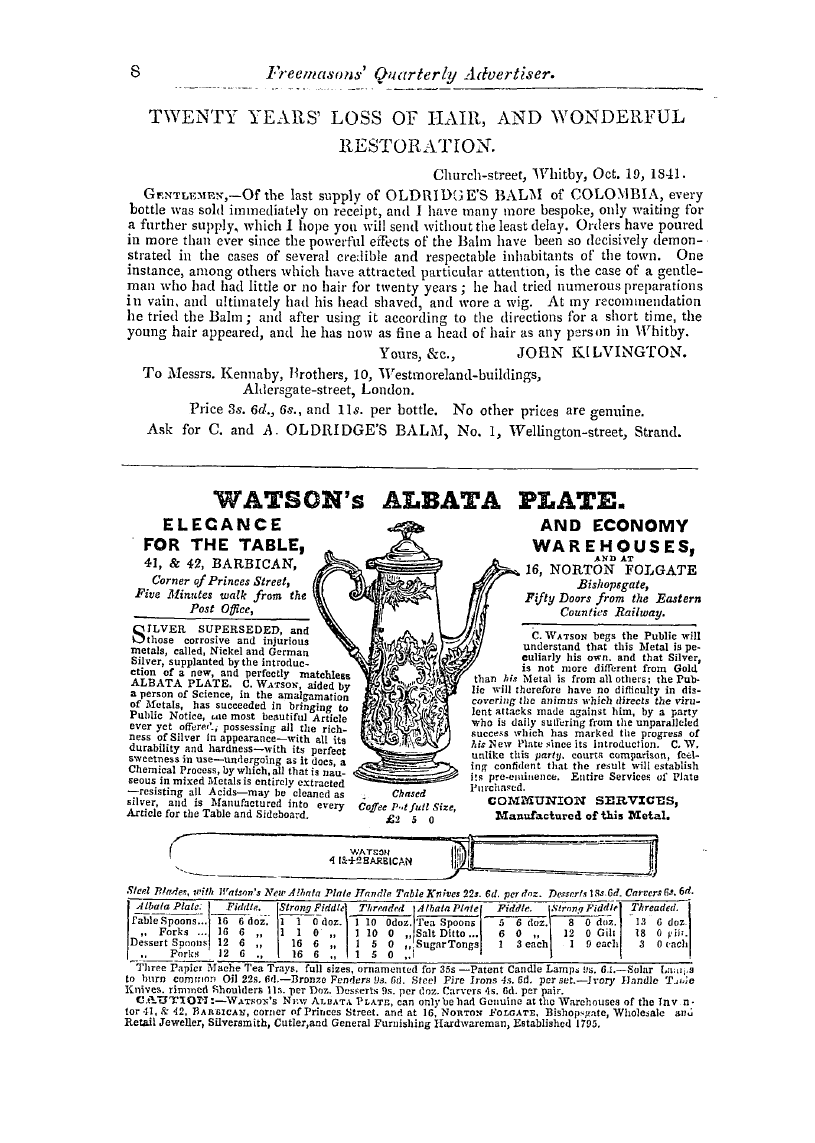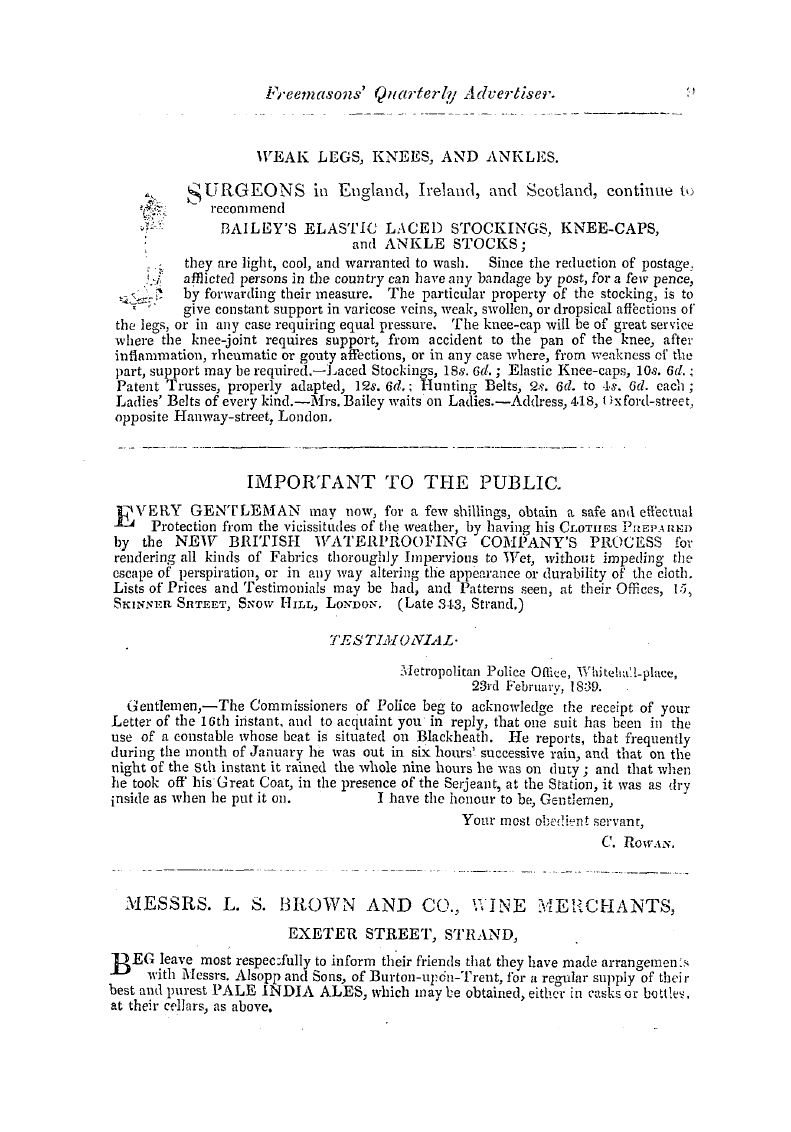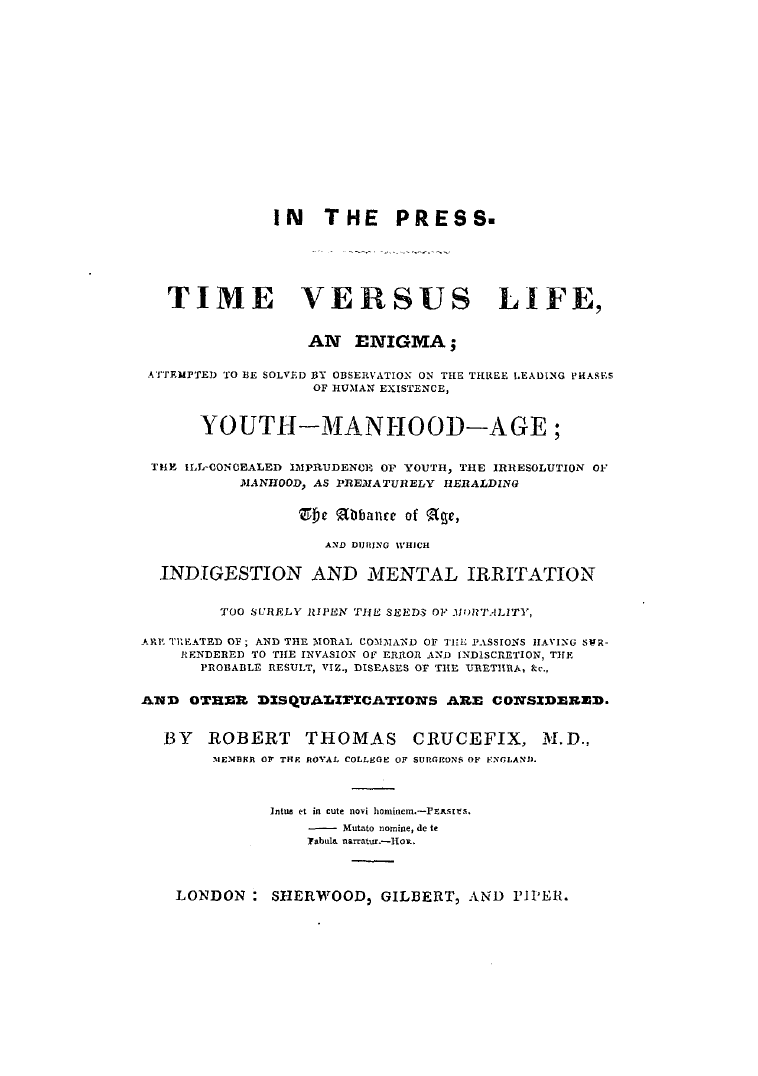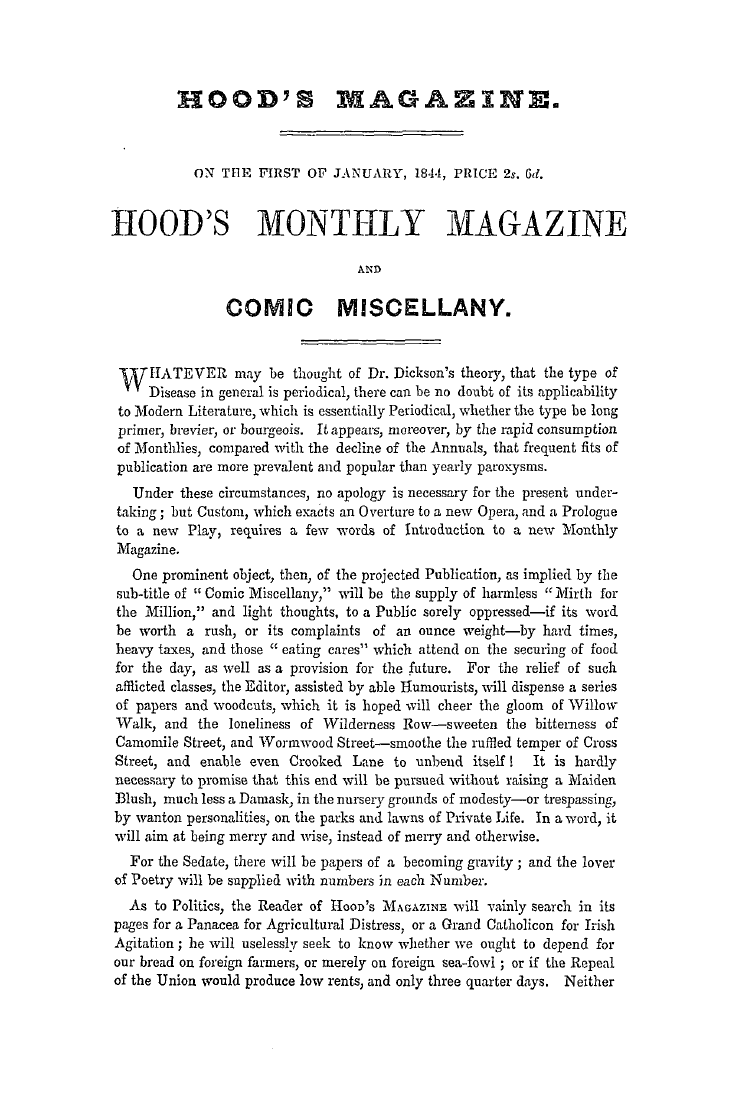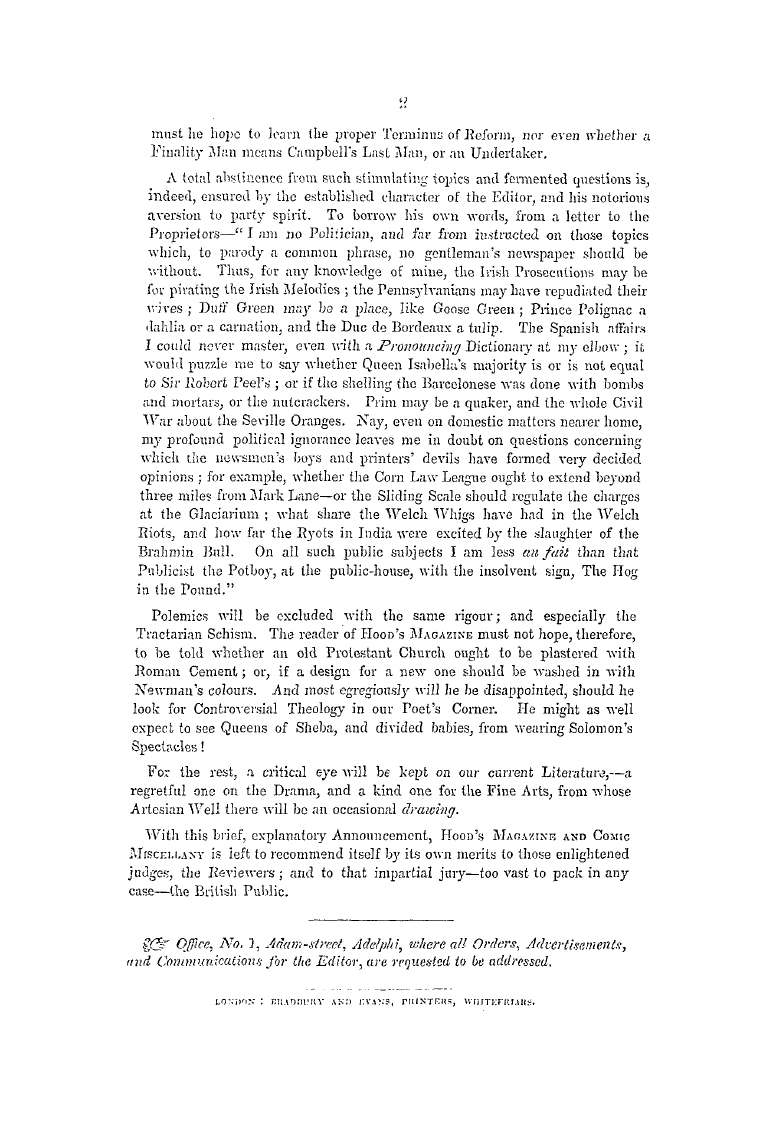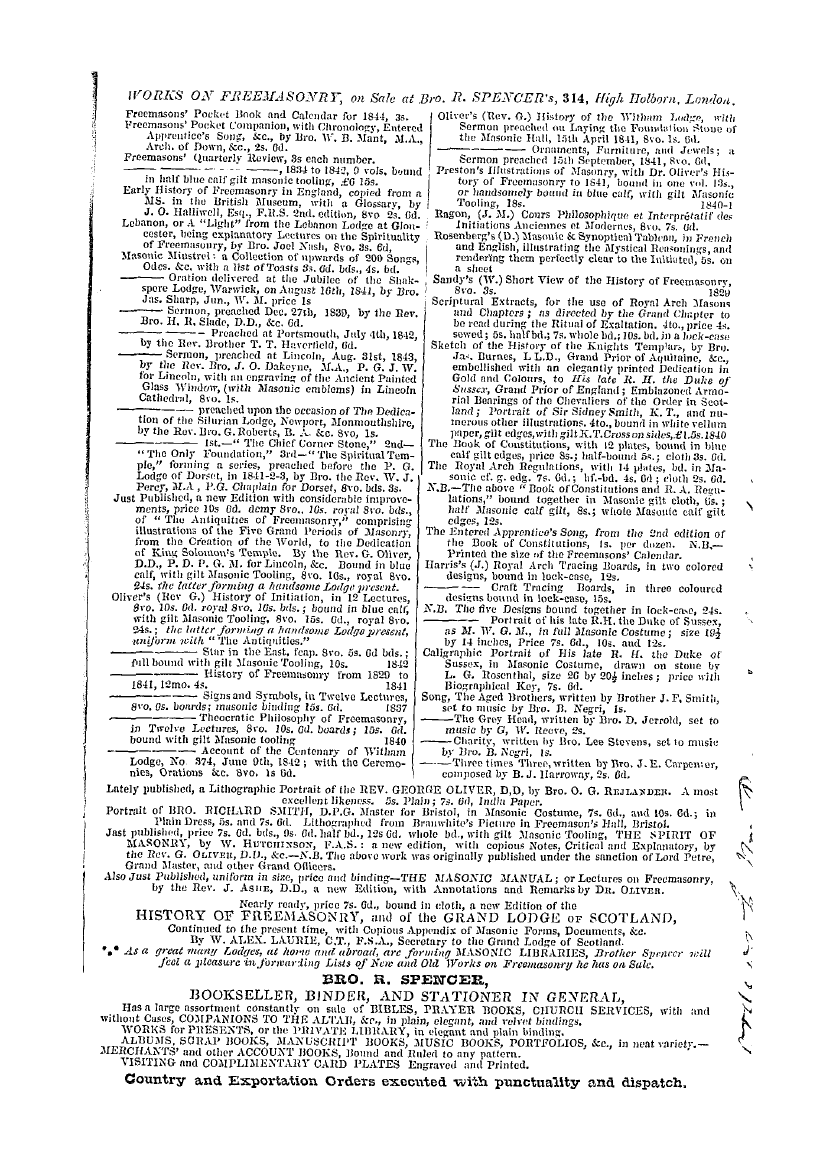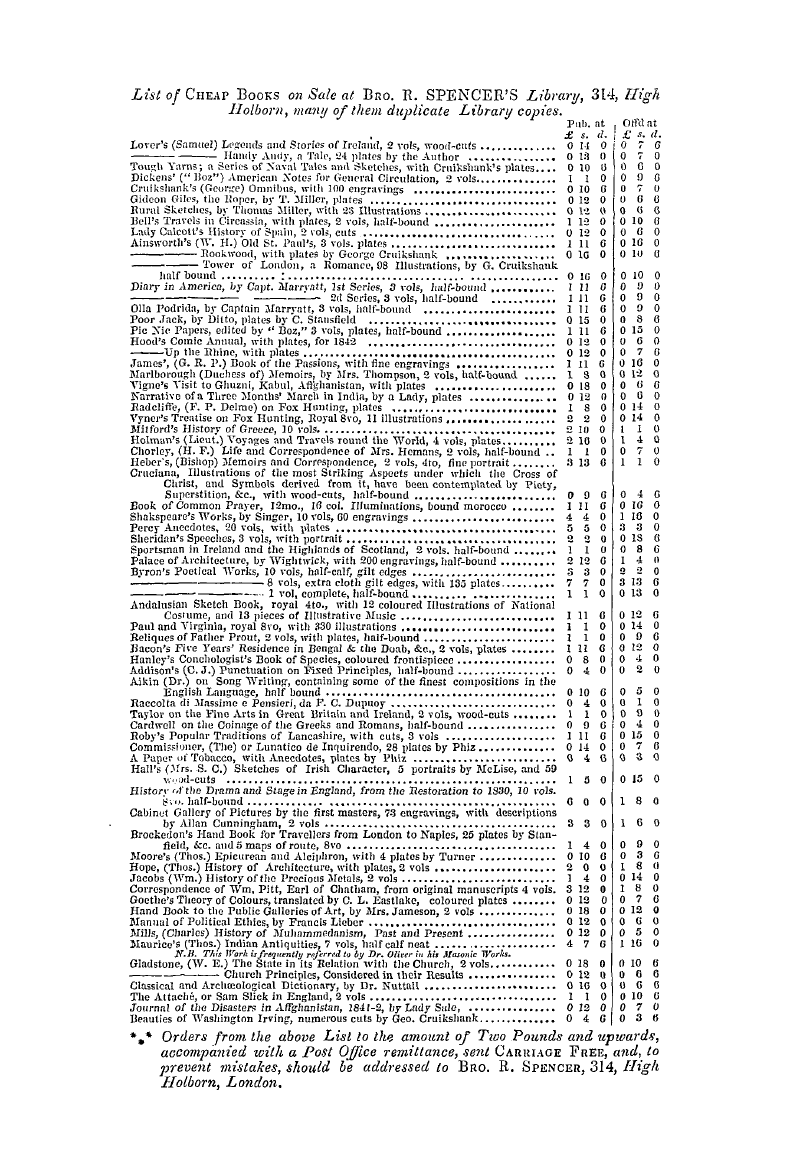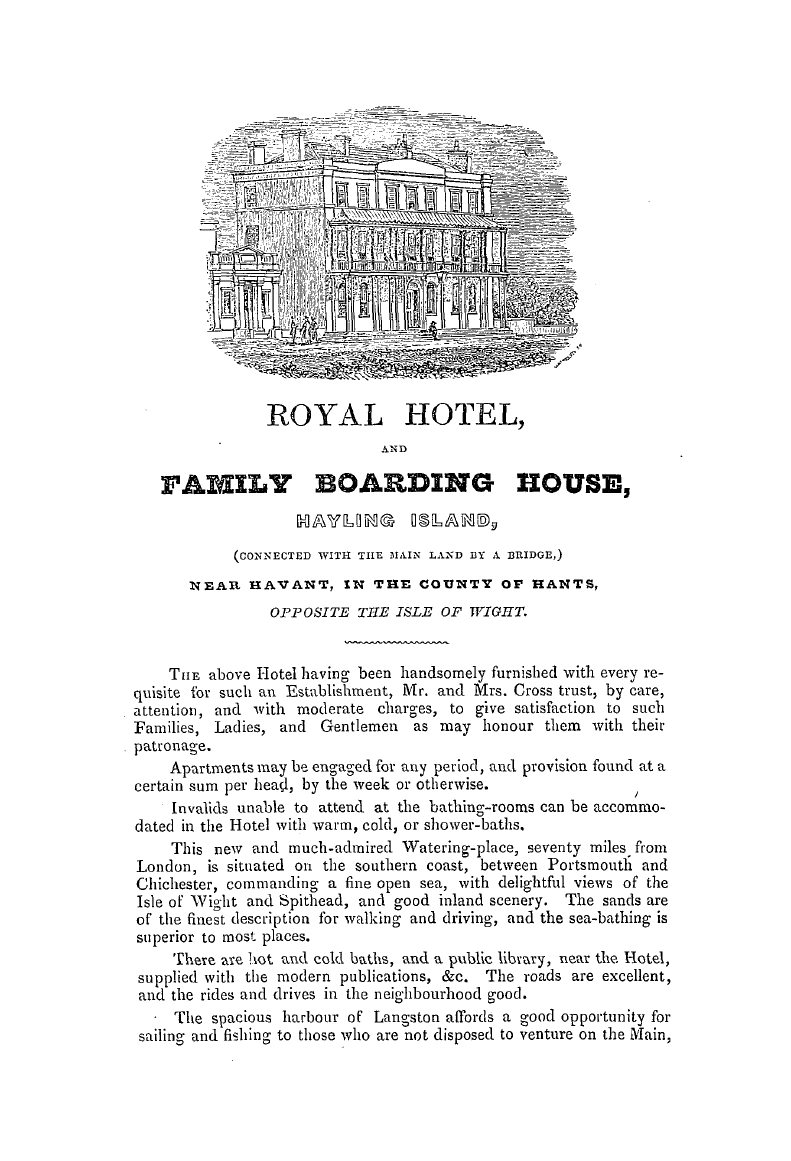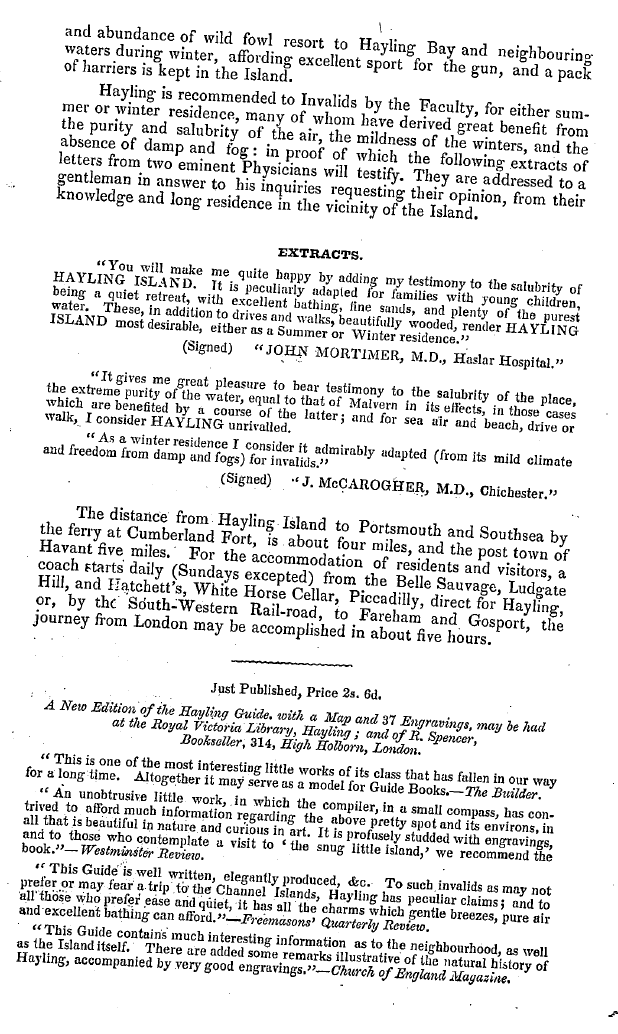-
Articles/Ads
Article OBSERVATIONS ON THE DEGREE OF "ROSE CROIX." ← Page 3 of 5 →
Note: This text has been automatically extracted via Optical Character Recognition (OCR) software.
Observations On The Degree Of "Rose Croix."
the battle of Bannockburn , when tbe Royal Order was understood to have been established . Another reason is , that it has got some way interwoven with the complicated system of Masonic Templarism ; and liberty to practise it under the name of H . R . D . M ., or H . R . D . MK . D . S . H , '" ' was granted to the Encampments , in charters for Masonic Templars , during the long period the late Duke of Kent was at the head of the higher orders of Masonry in England .
The Royal Order at one time flourished in England ; but soon after the middle of last century , about the time it was revived in Scotland , it seems to have disappeared ; and not long after that , the Rose Croix was introduced from France . In 1787 , there arose a Chapter of Harodin in London , but that seemed to bave been composed of Lodges and Chapters of Instruction for all the grades of Masonry ; and had no relation either with the Eagle and Pelican , or the Royal Order;—it is said
by some to have been instituted by Preston . The genuine H . R . D . M ., or R . S . Y . C . S . has , at present , no Chapter or Lodge in England or Ireland . But as late as 1730 , there was a Provincial Grand Lodge for South Britain , which met at the Thistle and Crown in Chandos Street , and also a Provincial Grand Master ' s Chapter at the same place : the date of their constitution was then so ancient , that they supposed themselves to have been from " time immemorial . " There was also a Chapter at the Coach and . Horses , in Welbeck
Street ; and another at the Blue Boar ' s Head , Exeter Street , these were of similar antiquity . From the dormant state of the Royal Order in Scotland , the Provincial Grand Lodge of England seems to have obtained permission , from the Deputy Grand Master , to grant charters ; and accordingly , the Prov . G . M ., on December 11 , 1743 , did grant a charter to some Brethren , to meet at the Golden Horse-shoe , Cannon Street , Southwark ; and on 20 th December , 1744 , to some others , tomeetat the
Griffin , at Deptford , Kent . On 22 nd July , 1750 , ( in the ninth year of his Prov . Grand Mastership ) , he also granted a charter to one William Mitchel , for a Chapter at the Hague , but that was never made use of ; and Mitchel , by birth a Scotchman , returning soon after to Scotland , re-established , with what assistance he could get , the order in that country , where it flourished until the end of last century ; and , although it has since declined much , is now , under the auspices of some zealous
Brethren , again raising its head . The Royal Order is not only the ancient order from which the modem Rose Croix has been stolen , but that from which all '' Scotch Masonry " has been derived . It is , moreover , a genuine Masonic order—Masonic from its origin , ( which the Masonic Templar was not ) , and intimately connected with the three degrees of St- Johnj Masonry ; indeed , Blue Masonry seems to have undergone considerable alteration about the time the Royal Order was instituted , and much of it can only be properly understood by a member of the Royal Order . In a late number of the Review , a regret was expressed that the Scotch Lodges did not adopt
Note: This text has been automatically extracted via Optical Character Recognition (OCR) software.
Observations On The Degree Of "Rose Croix."
the battle of Bannockburn , when tbe Royal Order was understood to have been established . Another reason is , that it has got some way interwoven with the complicated system of Masonic Templarism ; and liberty to practise it under the name of H . R . D . M ., or H . R . D . MK . D . S . H , '" ' was granted to the Encampments , in charters for Masonic Templars , during the long period the late Duke of Kent was at the head of the higher orders of Masonry in England .
The Royal Order at one time flourished in England ; but soon after the middle of last century , about the time it was revived in Scotland , it seems to have disappeared ; and not long after that , the Rose Croix was introduced from France . In 1787 , there arose a Chapter of Harodin in London , but that seemed to bave been composed of Lodges and Chapters of Instruction for all the grades of Masonry ; and had no relation either with the Eagle and Pelican , or the Royal Order;—it is said
by some to have been instituted by Preston . The genuine H . R . D . M ., or R . S . Y . C . S . has , at present , no Chapter or Lodge in England or Ireland . But as late as 1730 , there was a Provincial Grand Lodge for South Britain , which met at the Thistle and Crown in Chandos Street , and also a Provincial Grand Master ' s Chapter at the same place : the date of their constitution was then so ancient , that they supposed themselves to have been from " time immemorial . " There was also a Chapter at the Coach and . Horses , in Welbeck
Street ; and another at the Blue Boar ' s Head , Exeter Street , these were of similar antiquity . From the dormant state of the Royal Order in Scotland , the Provincial Grand Lodge of England seems to have obtained permission , from the Deputy Grand Master , to grant charters ; and accordingly , the Prov . G . M ., on December 11 , 1743 , did grant a charter to some Brethren , to meet at the Golden Horse-shoe , Cannon Street , Southwark ; and on 20 th December , 1744 , to some others , tomeetat the
Griffin , at Deptford , Kent . On 22 nd July , 1750 , ( in the ninth year of his Prov . Grand Mastership ) , he also granted a charter to one William Mitchel , for a Chapter at the Hague , but that was never made use of ; and Mitchel , by birth a Scotchman , returning soon after to Scotland , re-established , with what assistance he could get , the order in that country , where it flourished until the end of last century ; and , although it has since declined much , is now , under the auspices of some zealous
Brethren , again raising its head . The Royal Order is not only the ancient order from which the modem Rose Croix has been stolen , but that from which all '' Scotch Masonry " has been derived . It is , moreover , a genuine Masonic order—Masonic from its origin , ( which the Masonic Templar was not ) , and intimately connected with the three degrees of St- Johnj Masonry ; indeed , Blue Masonry seems to have undergone considerable alteration about the time the Royal Order was instituted , and much of it can only be properly understood by a member of the Royal Order . In a late number of the Review , a regret was expressed that the Scotch Lodges did not adopt































































